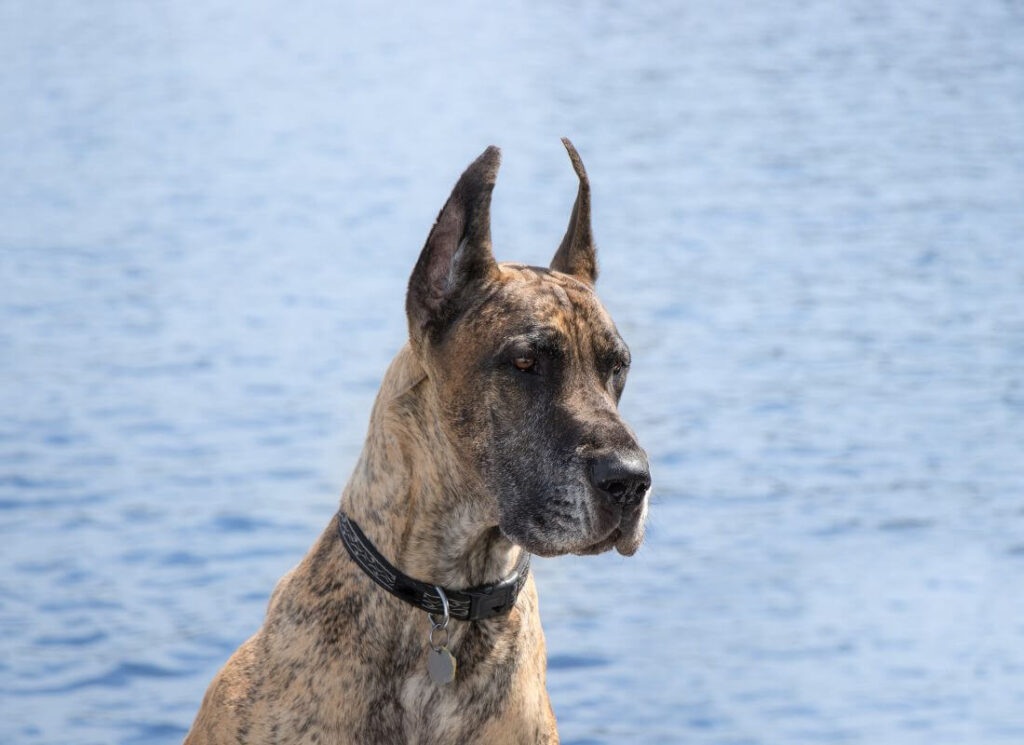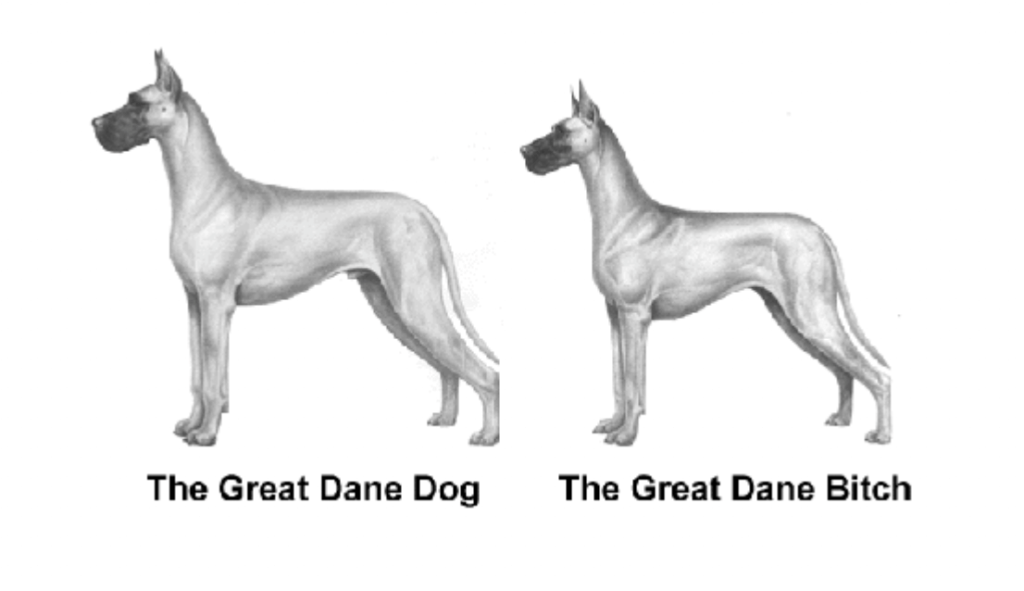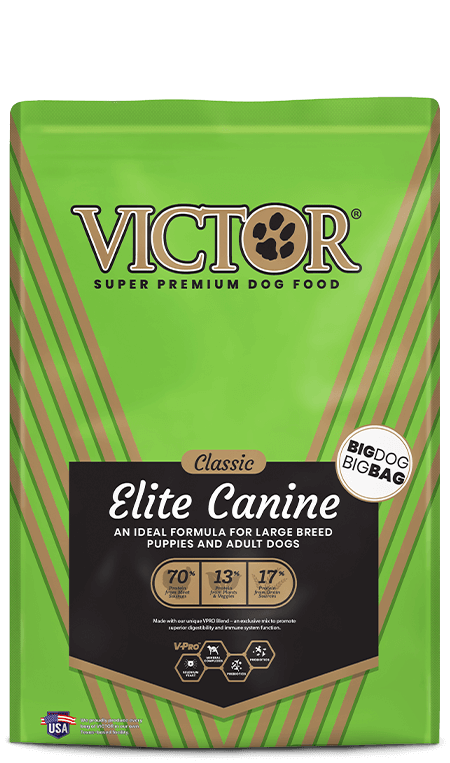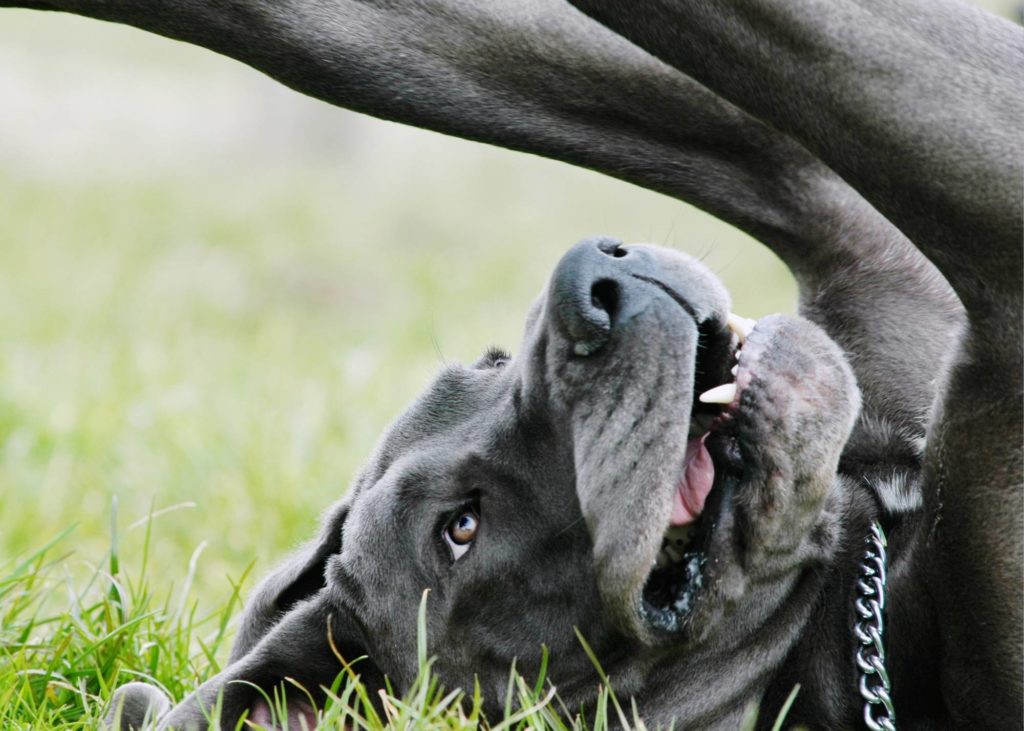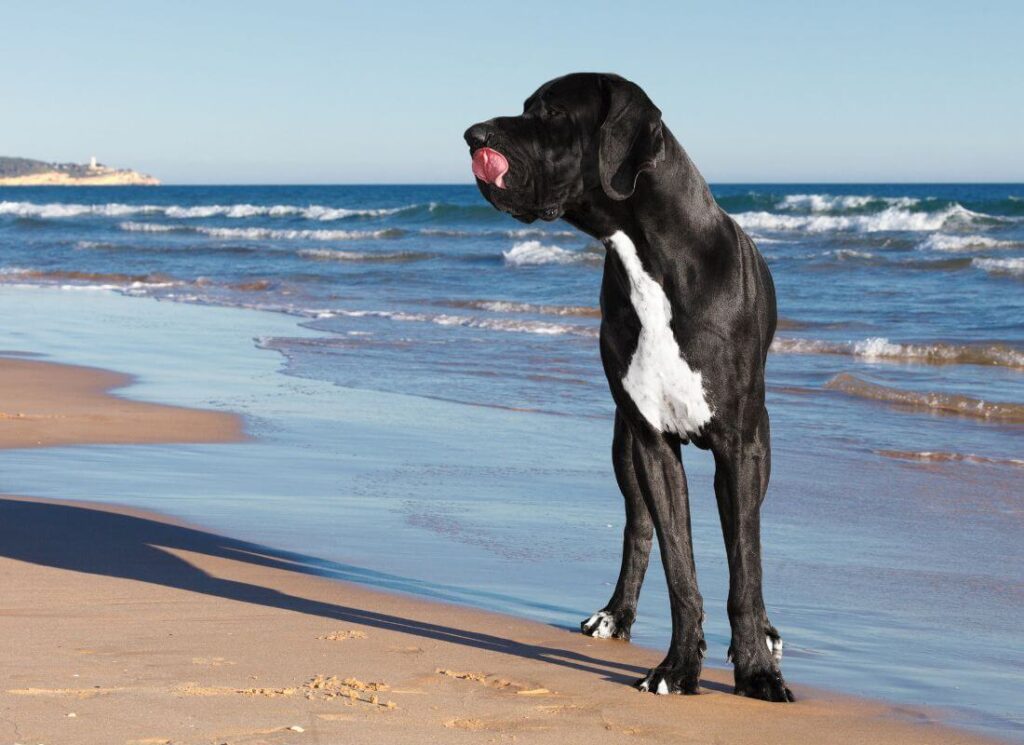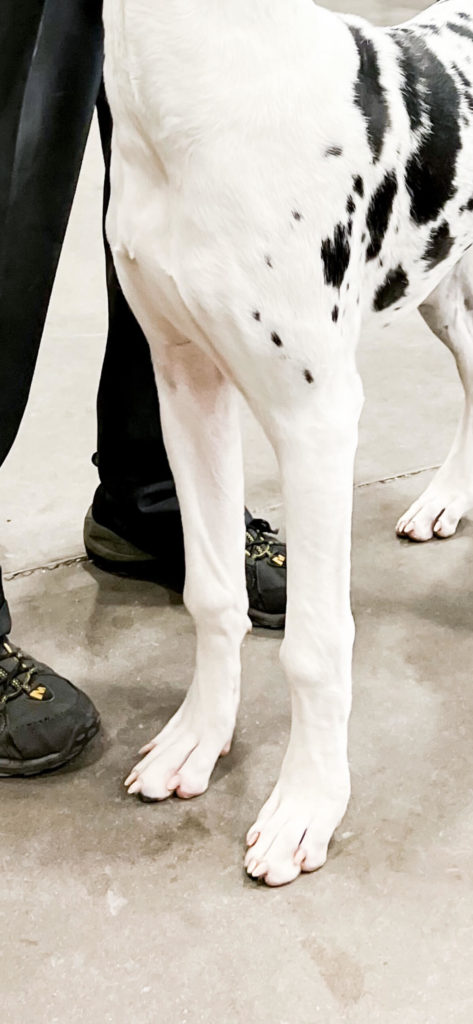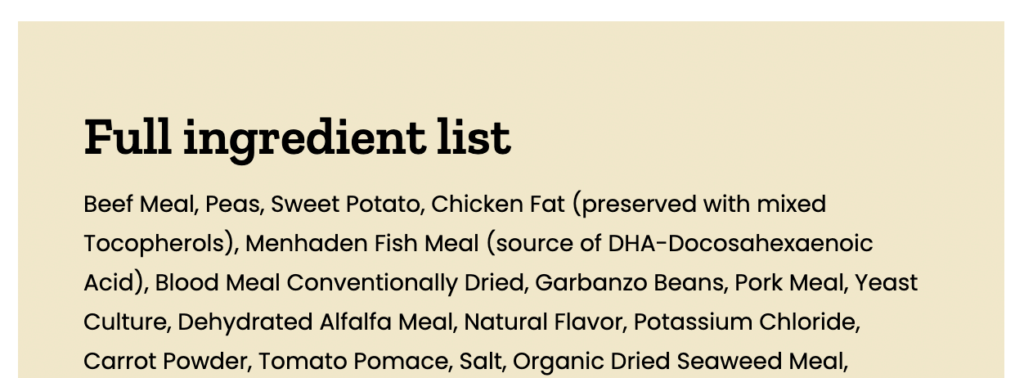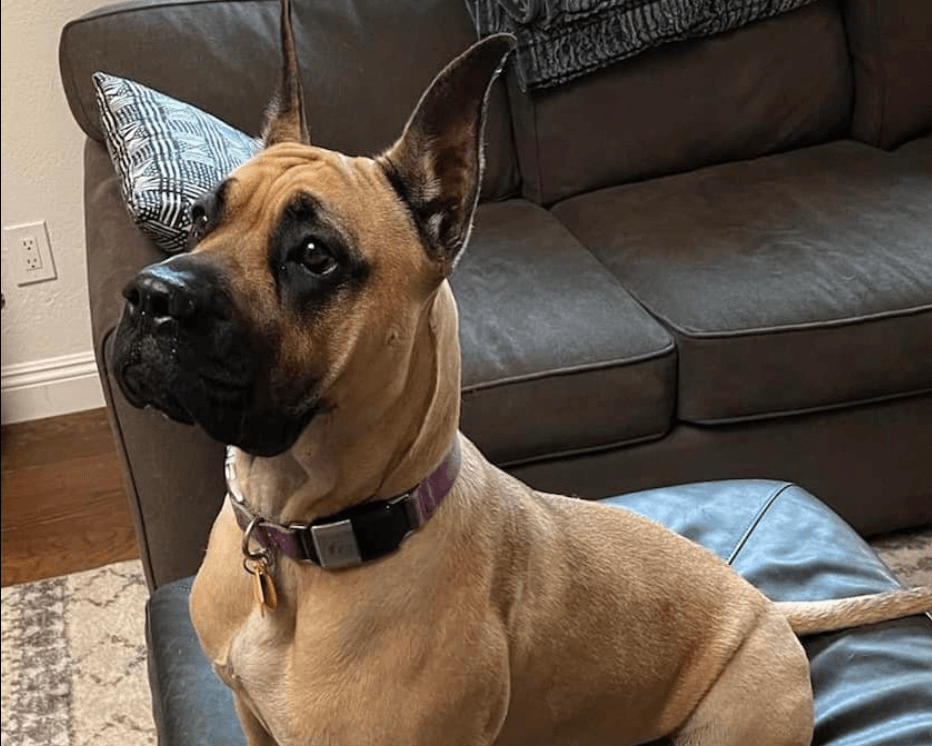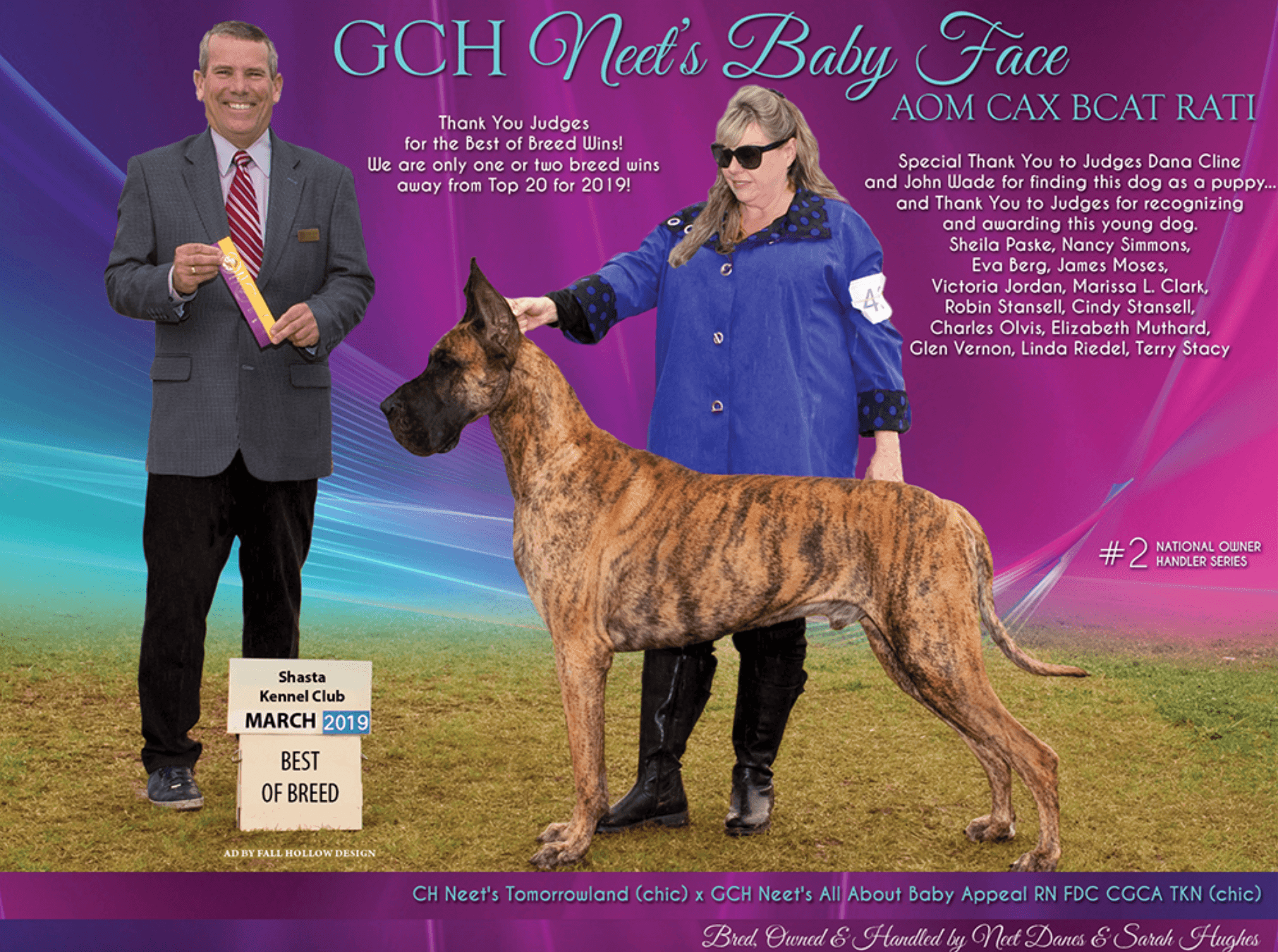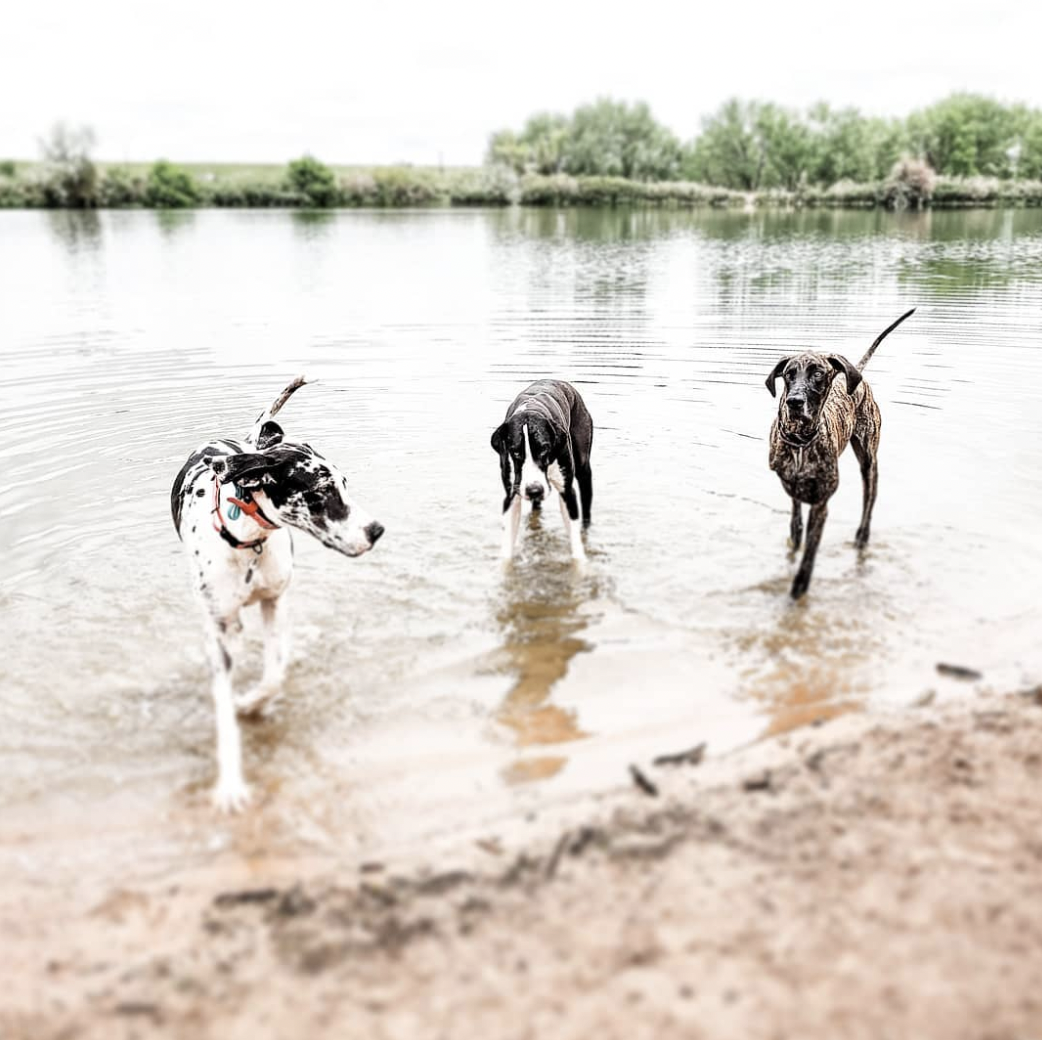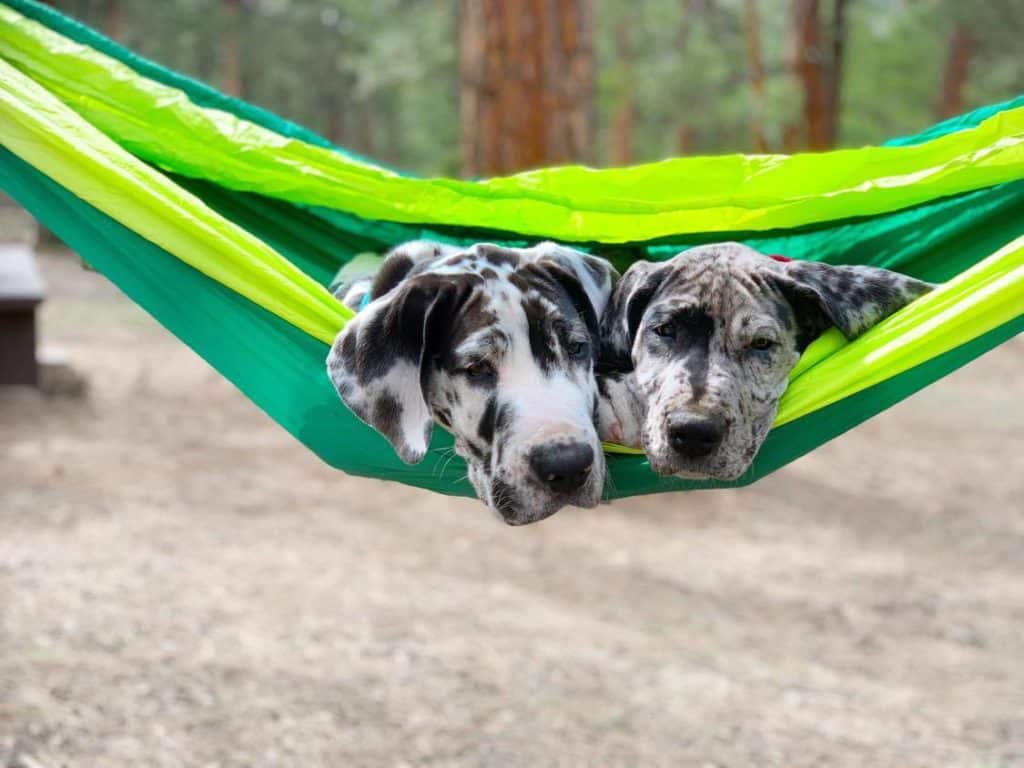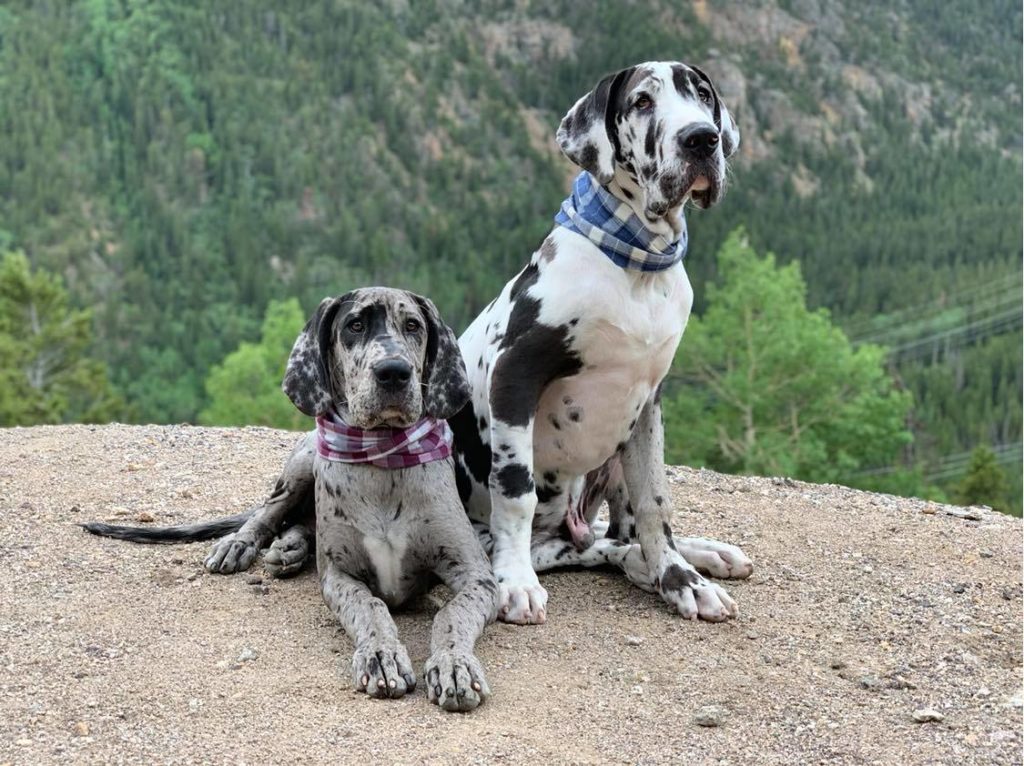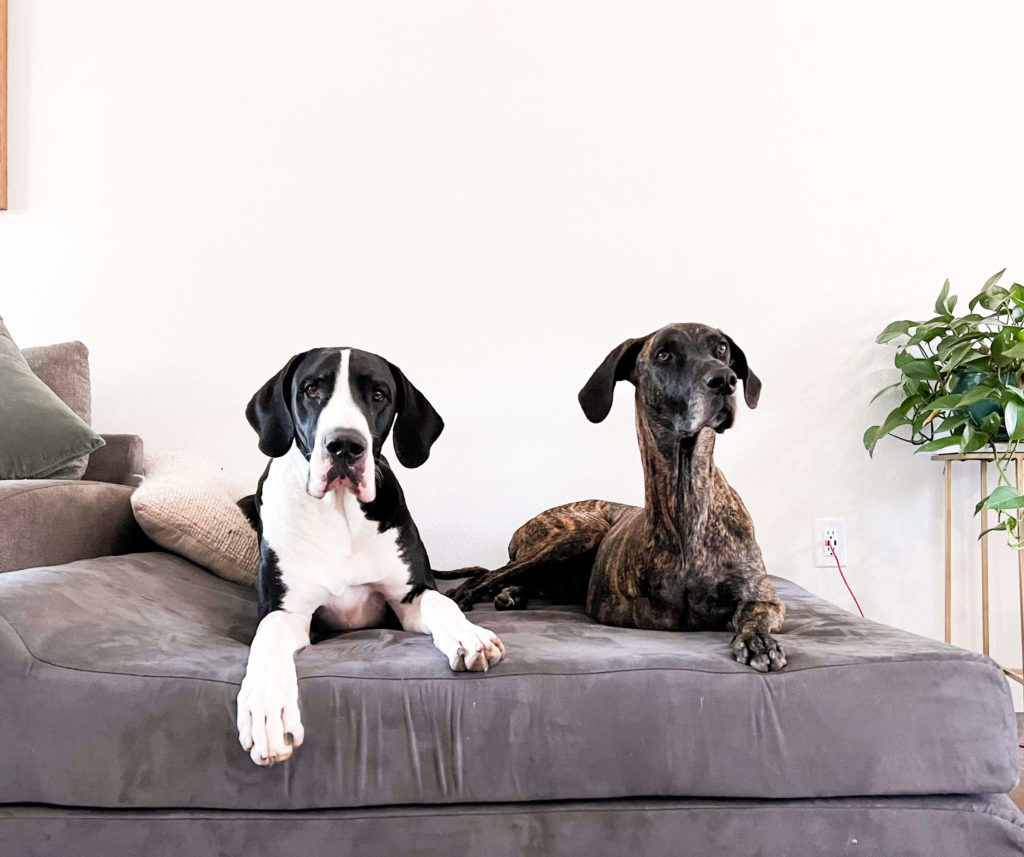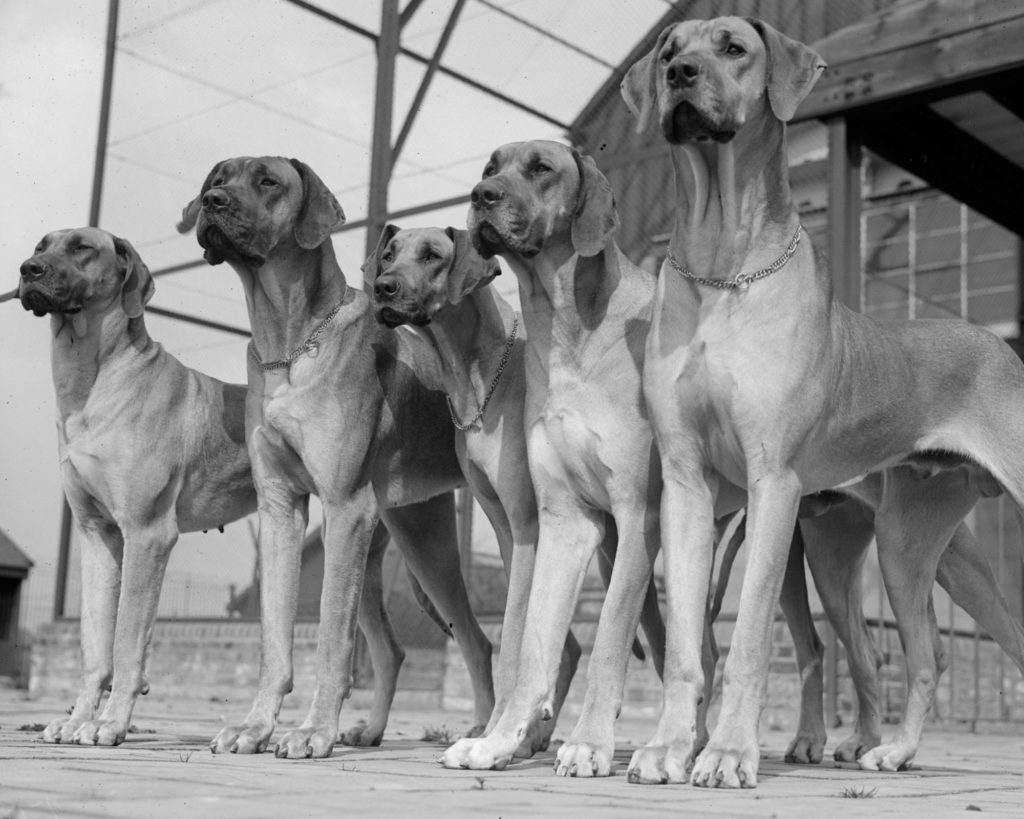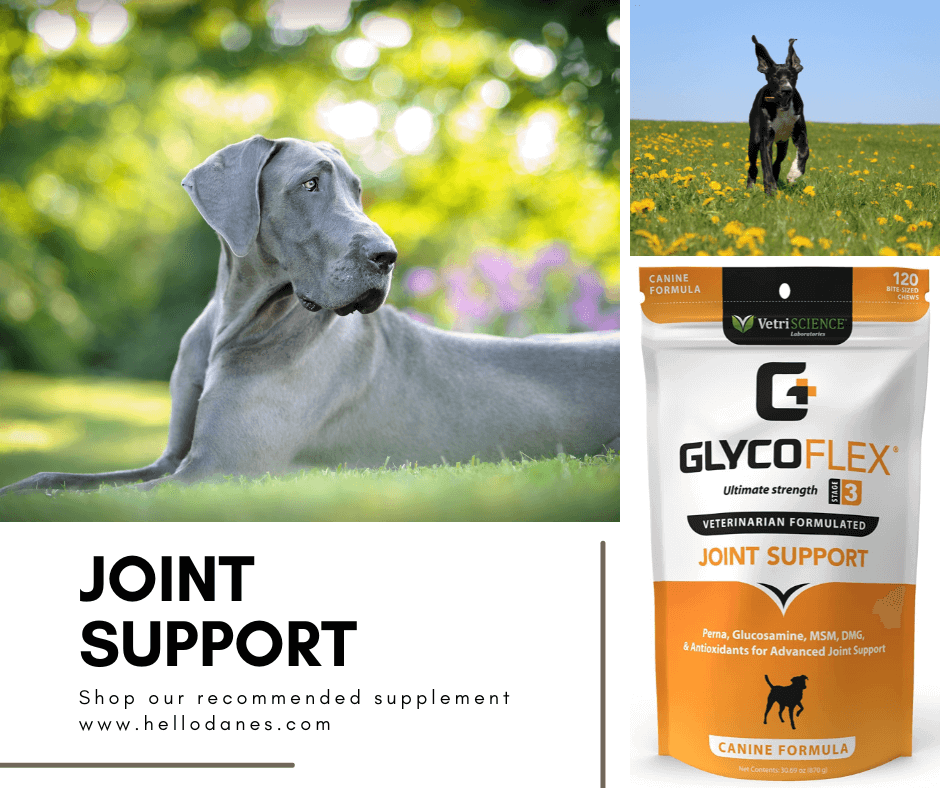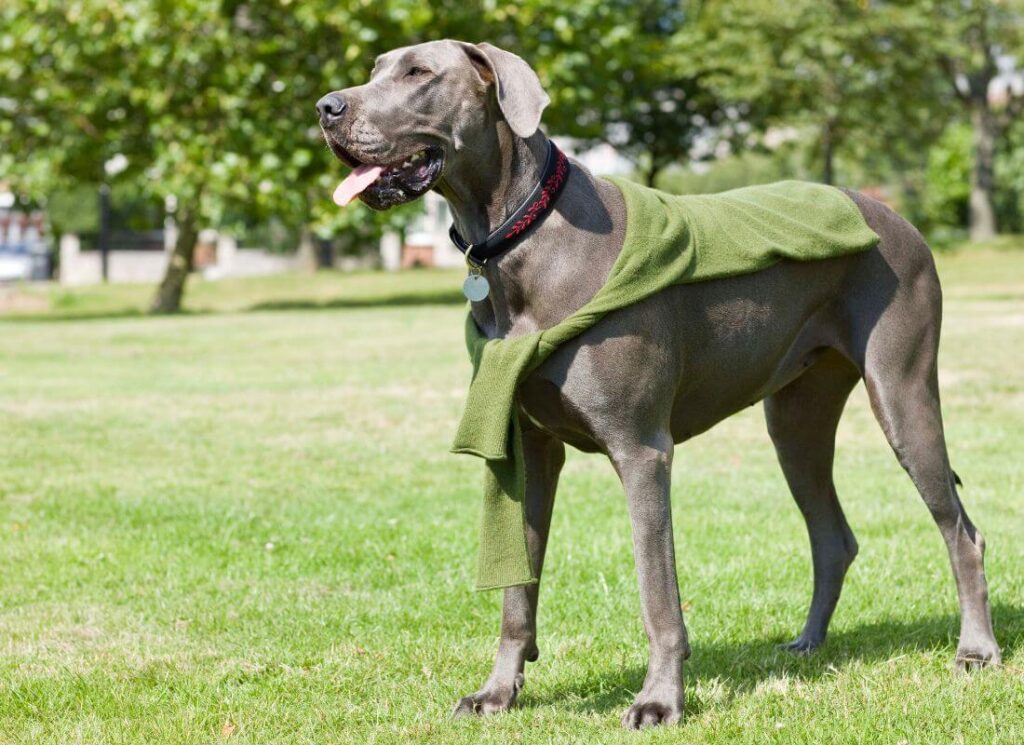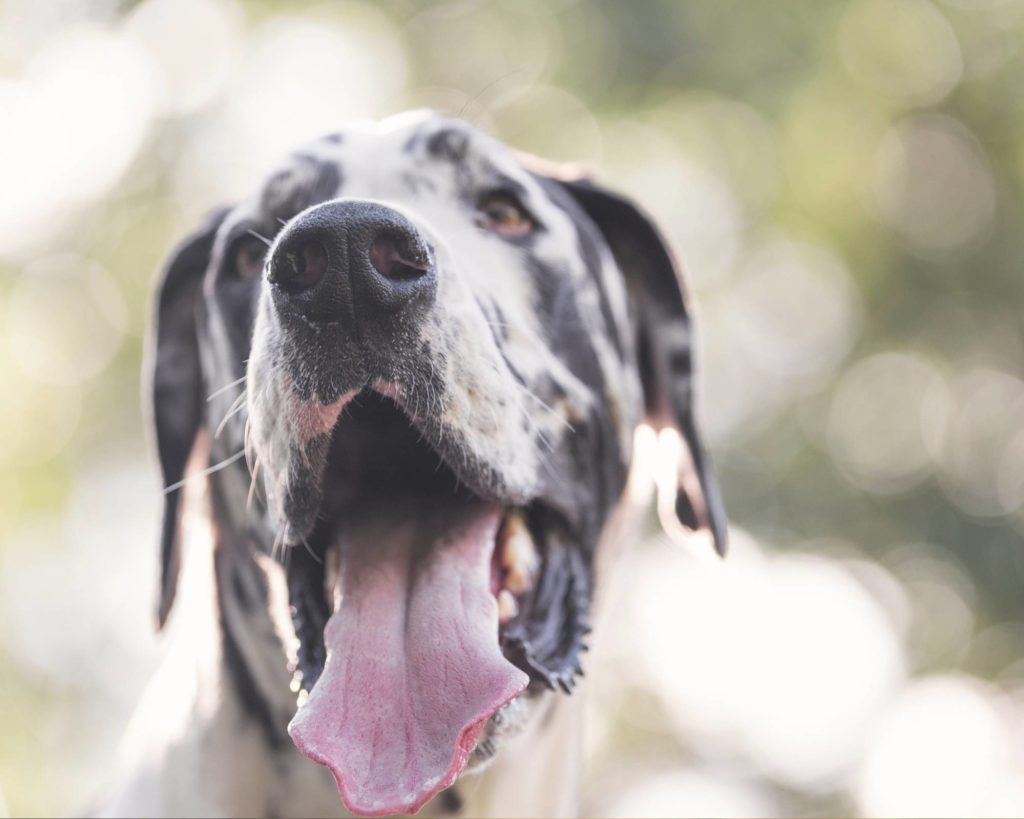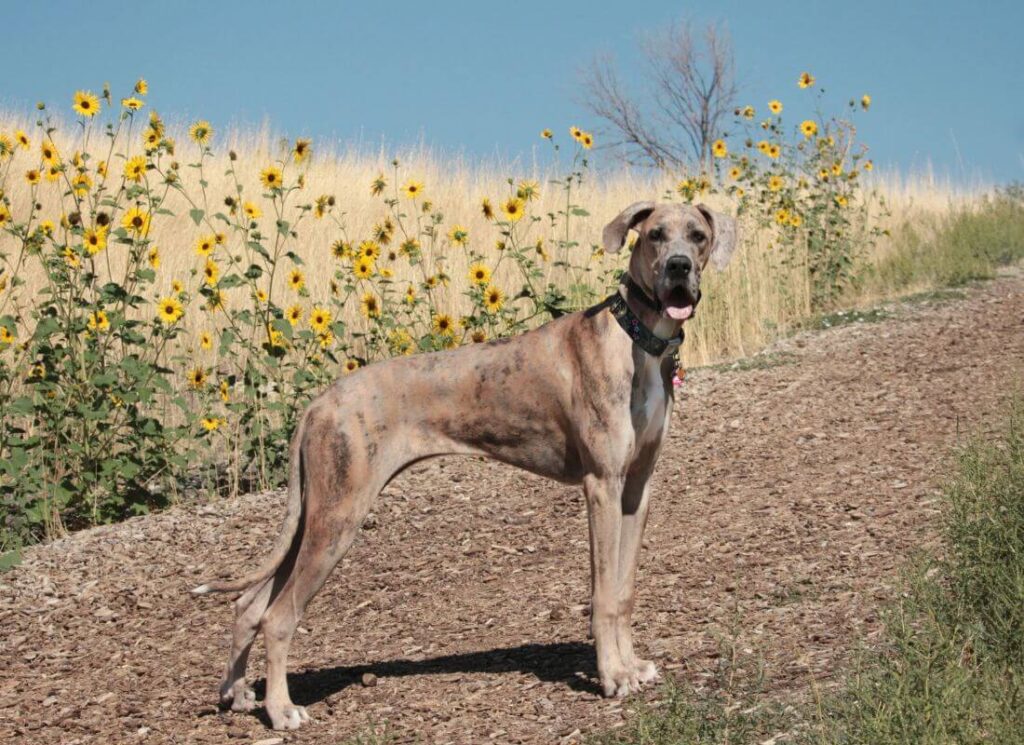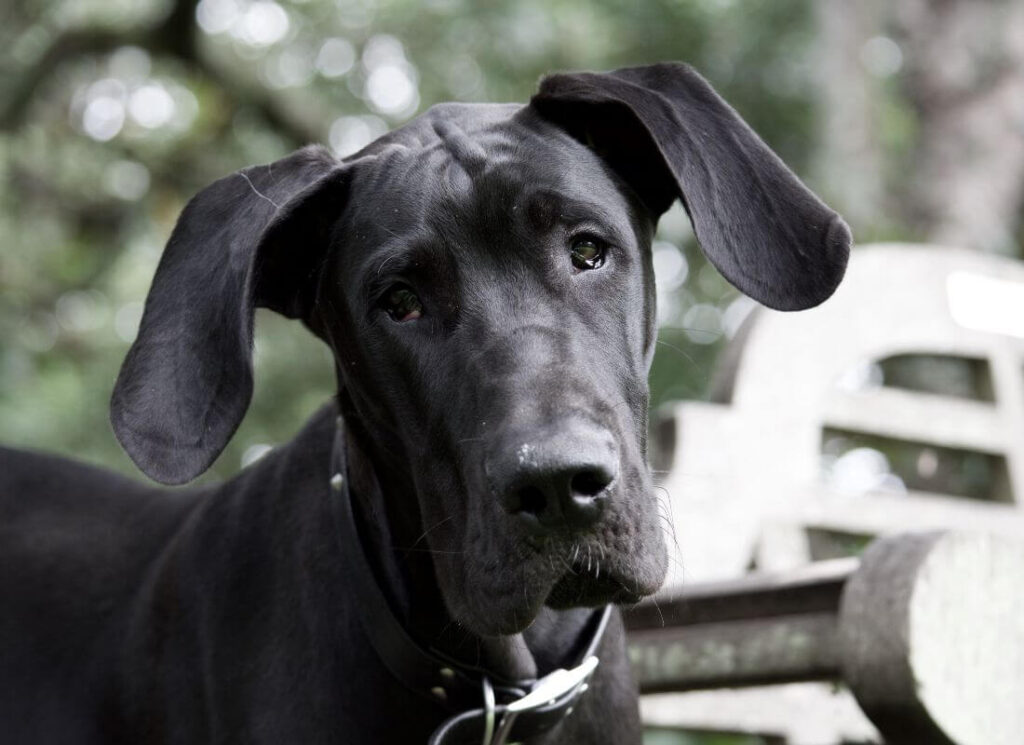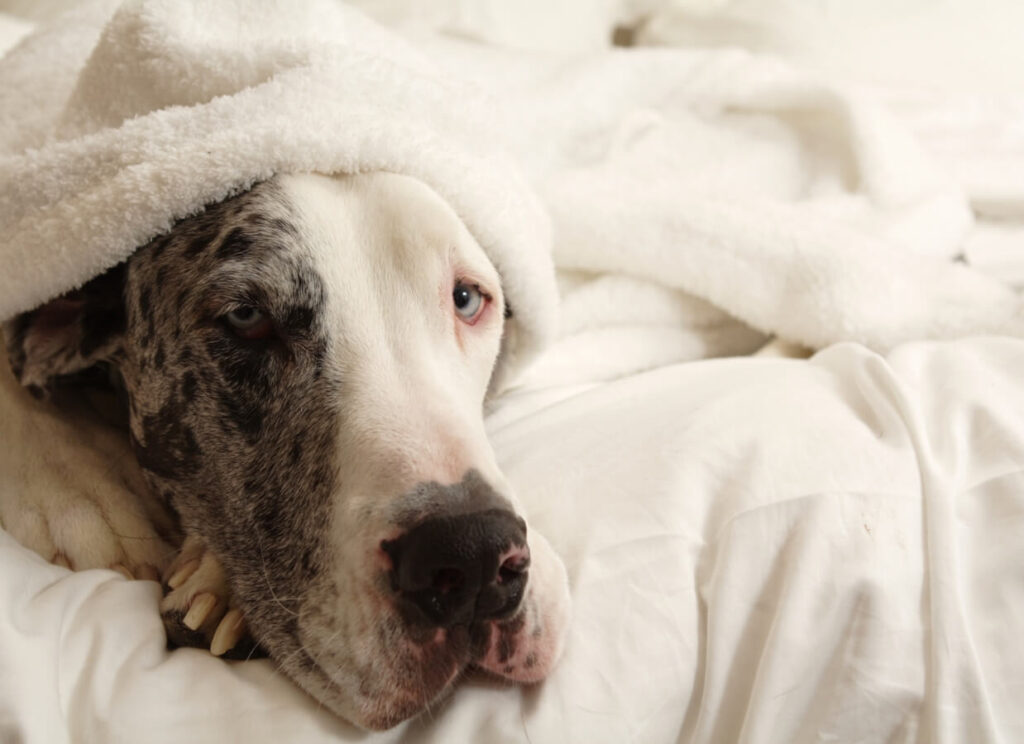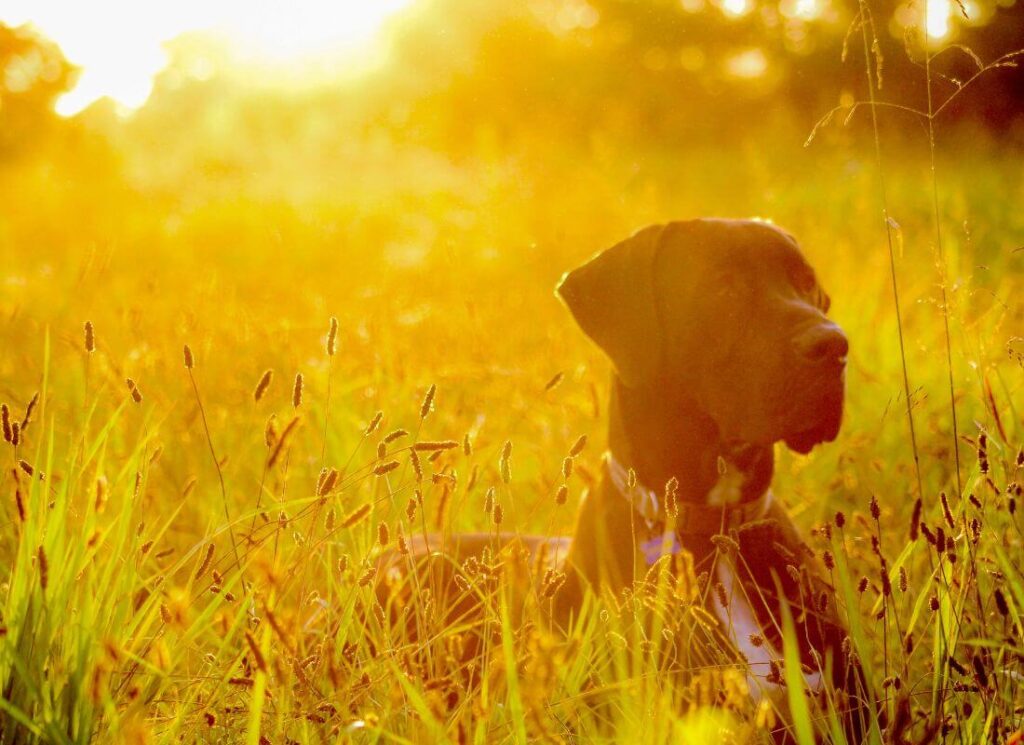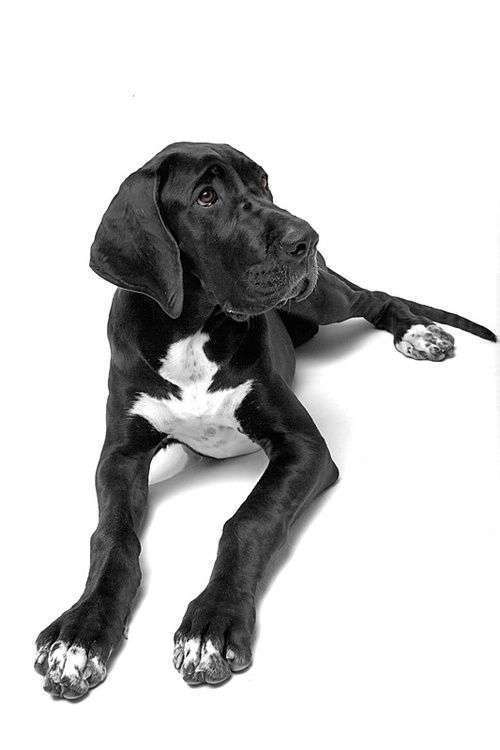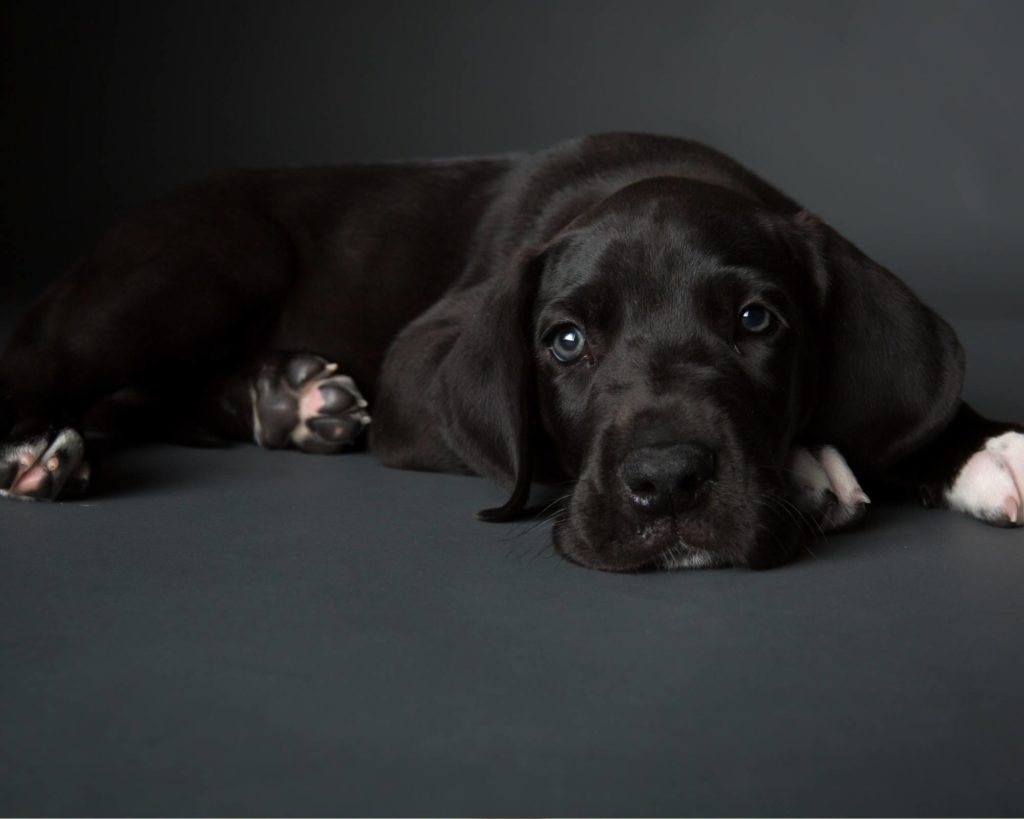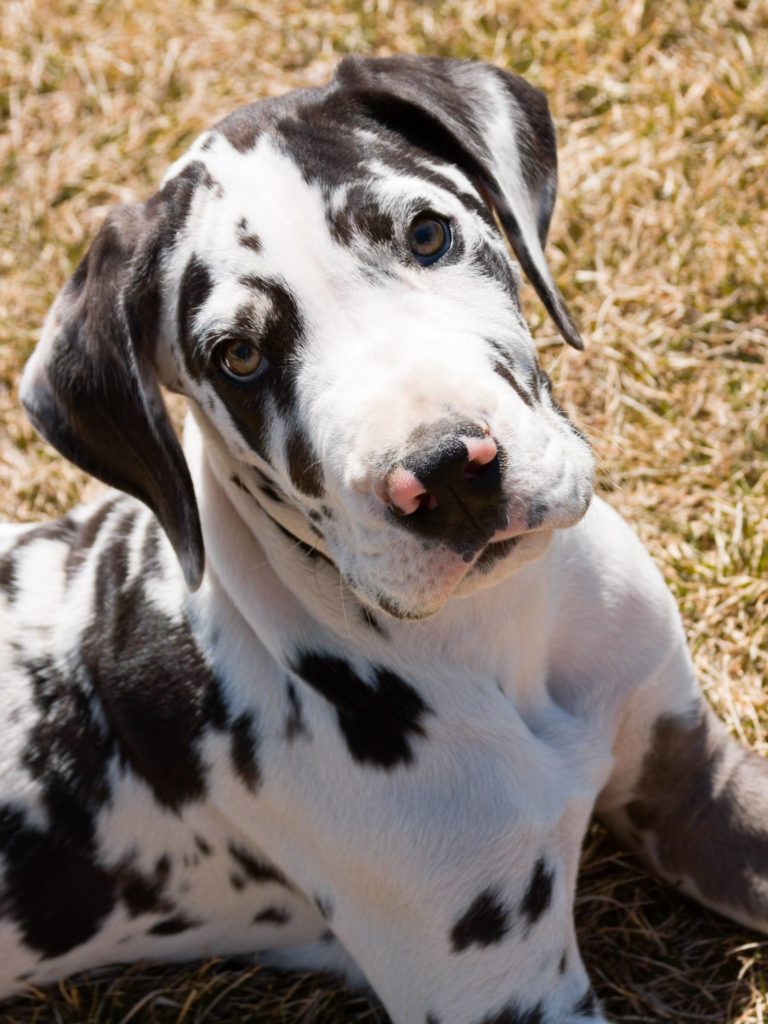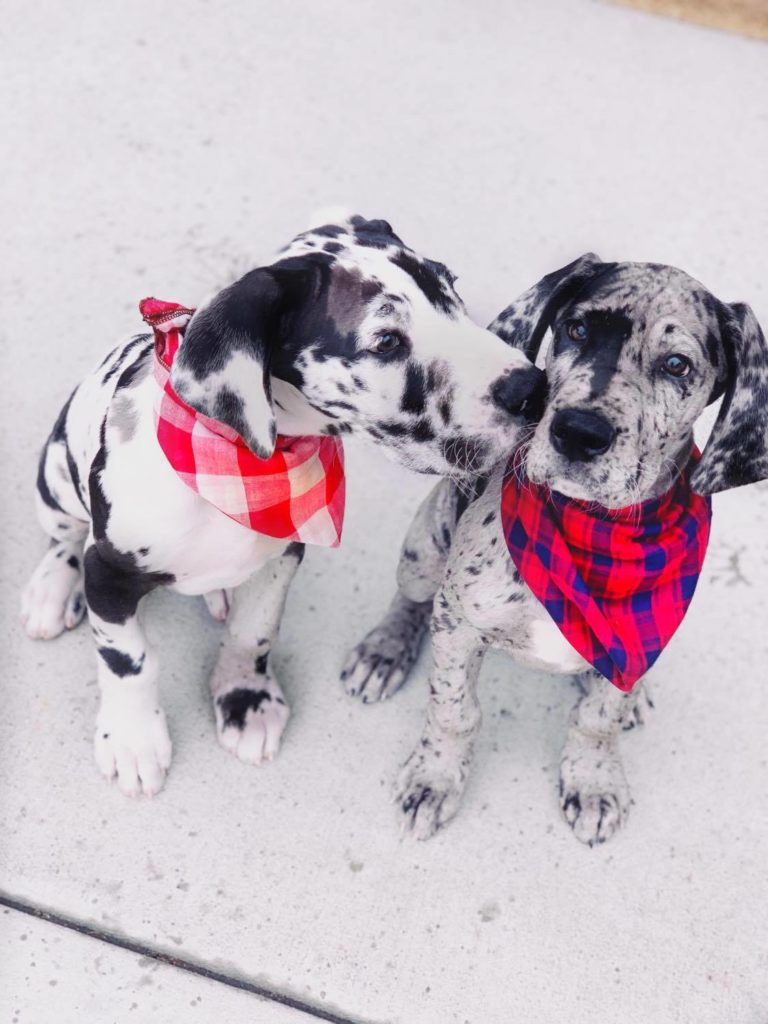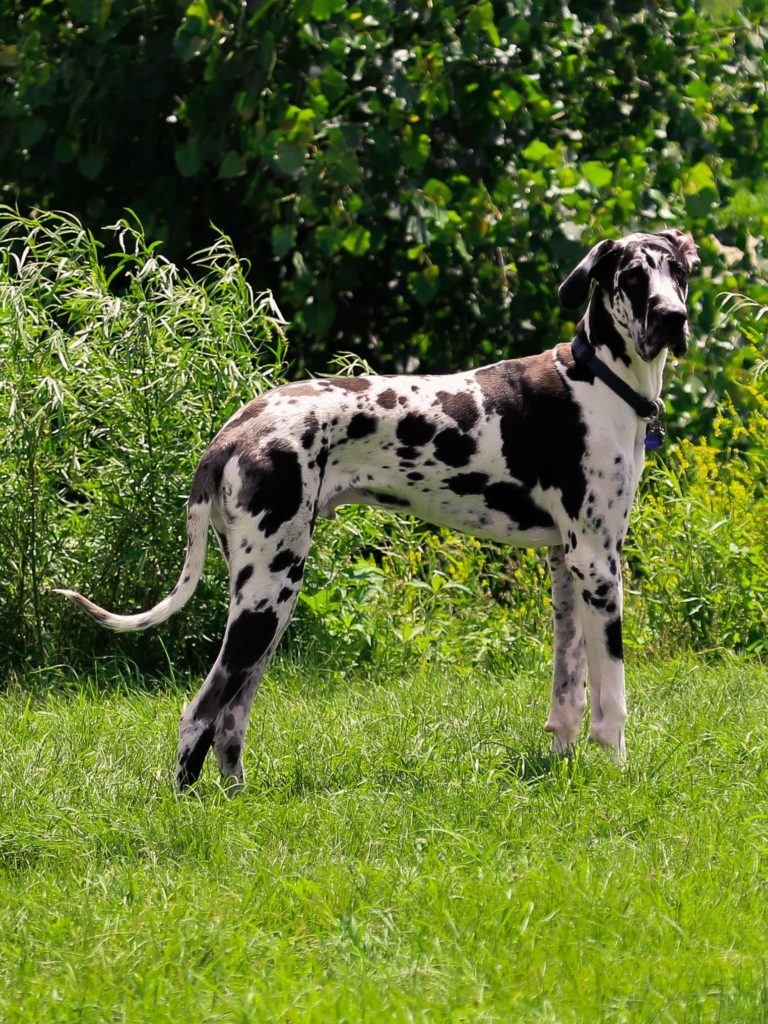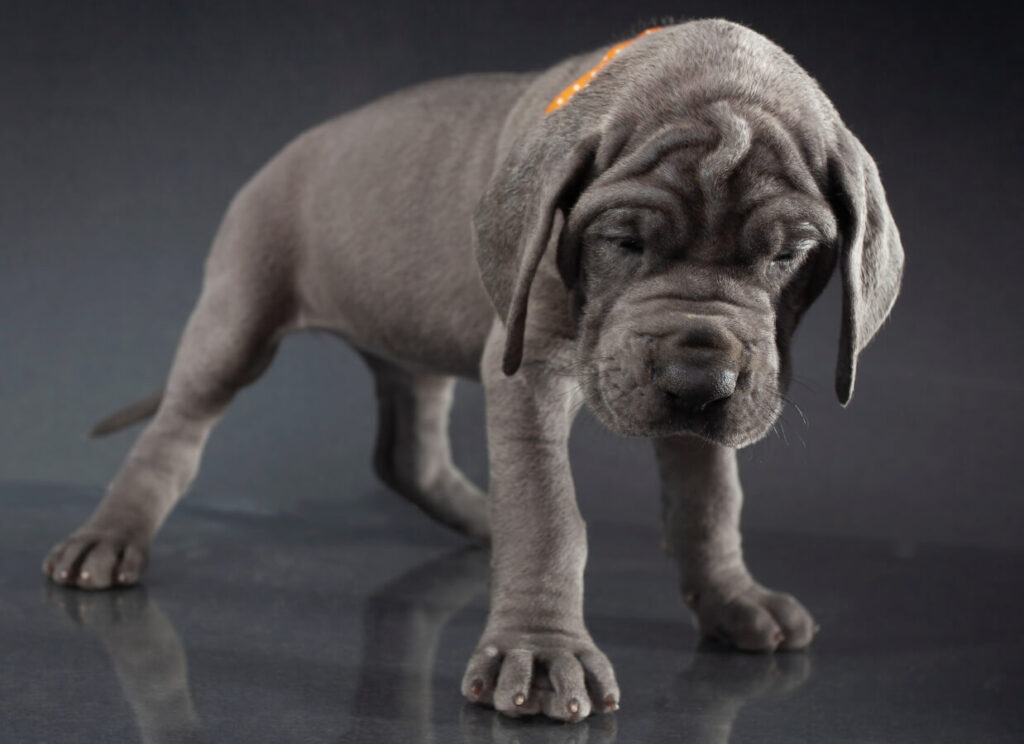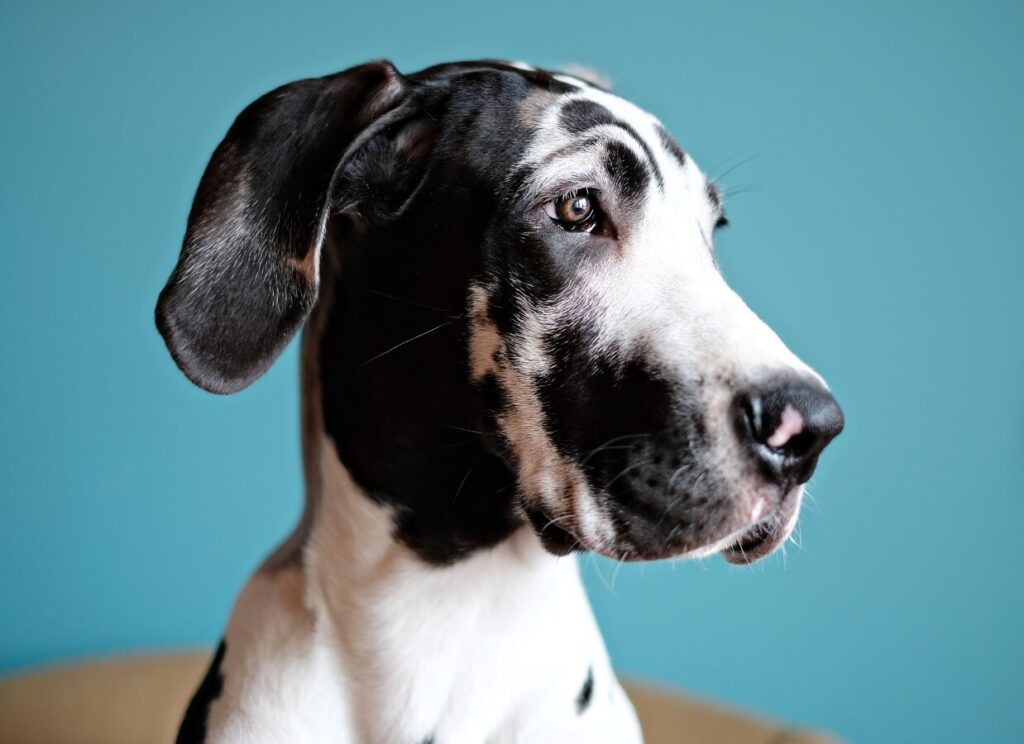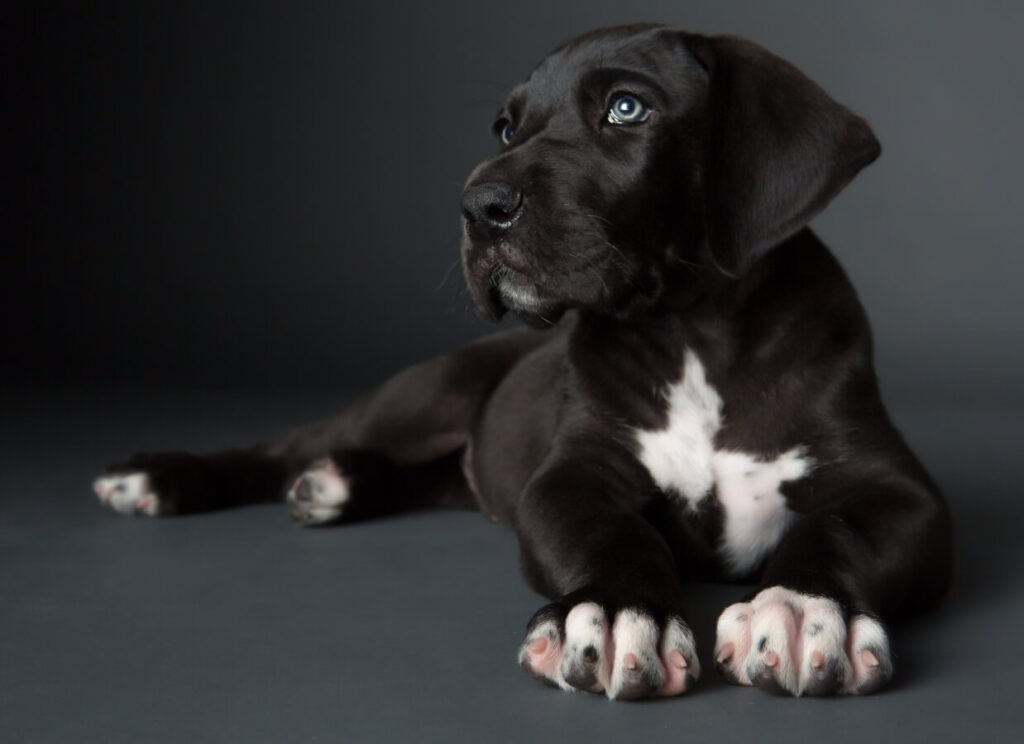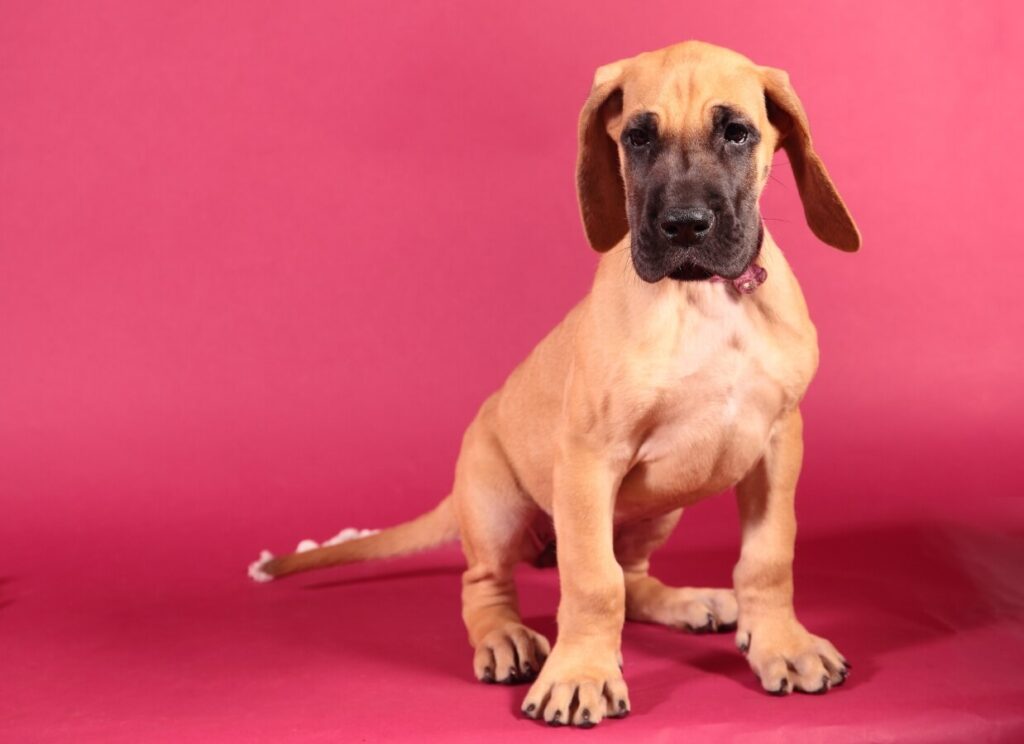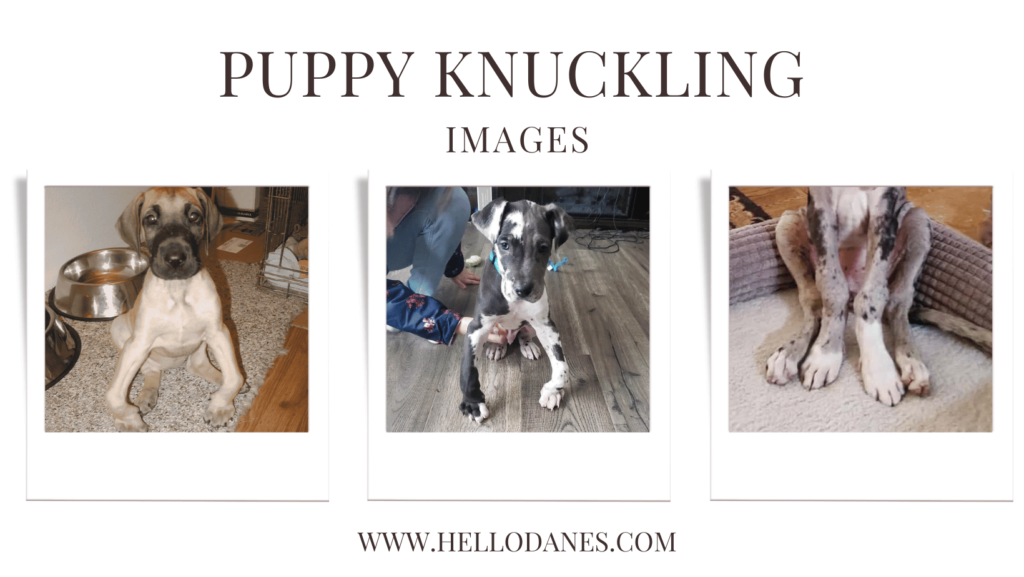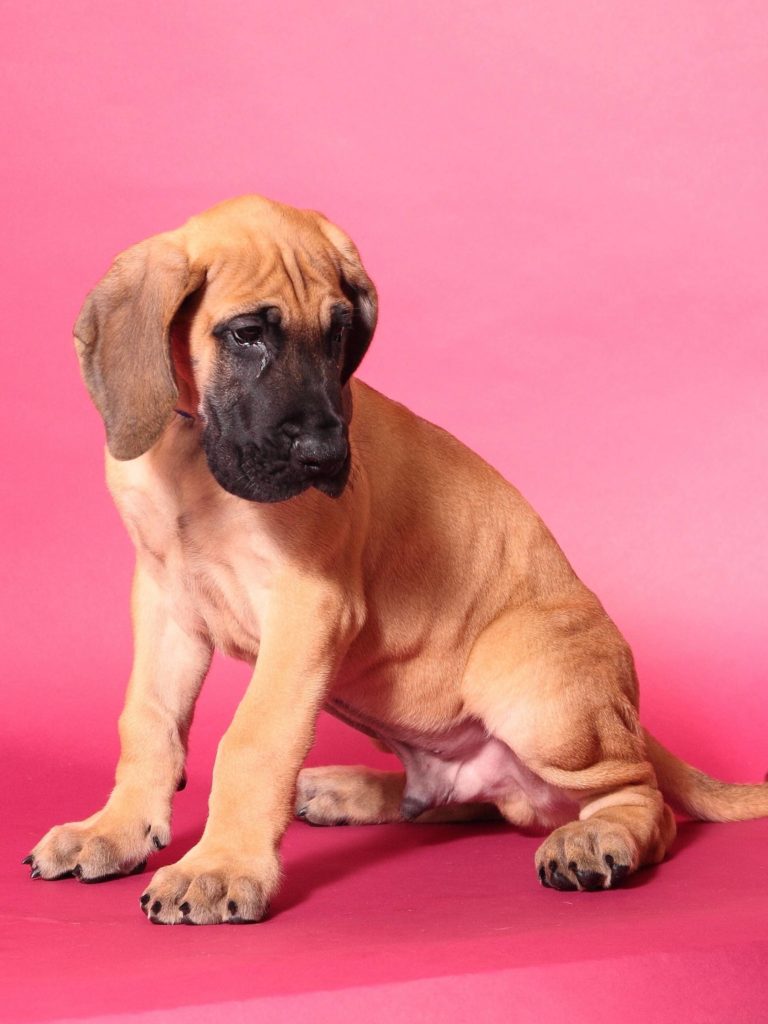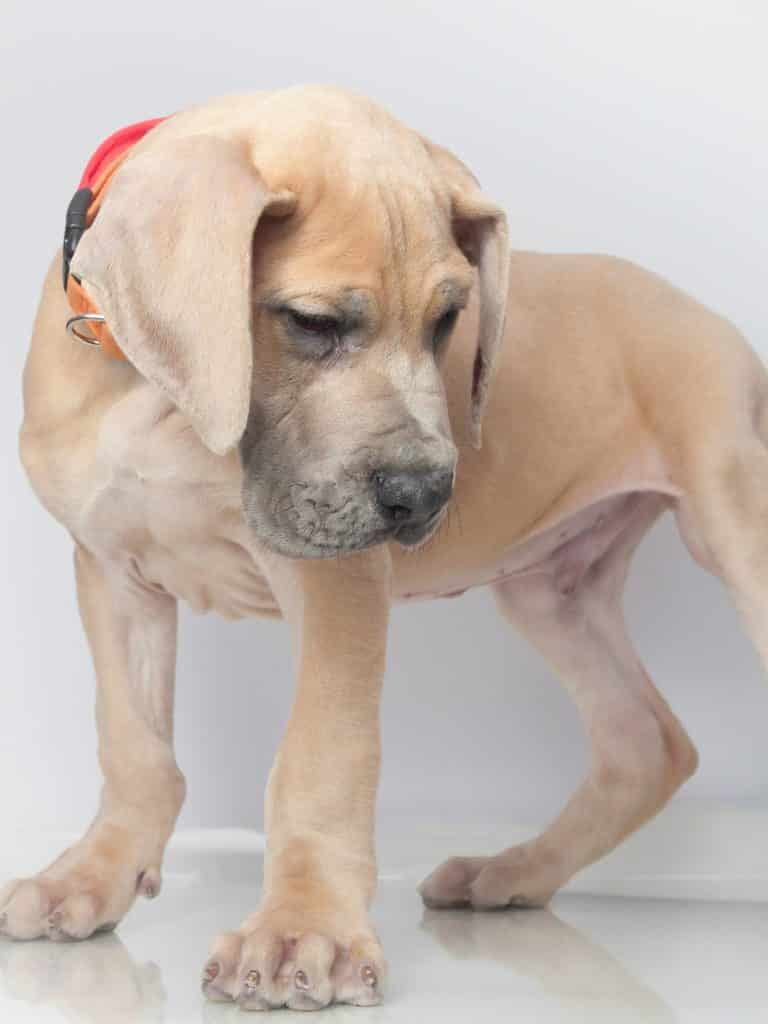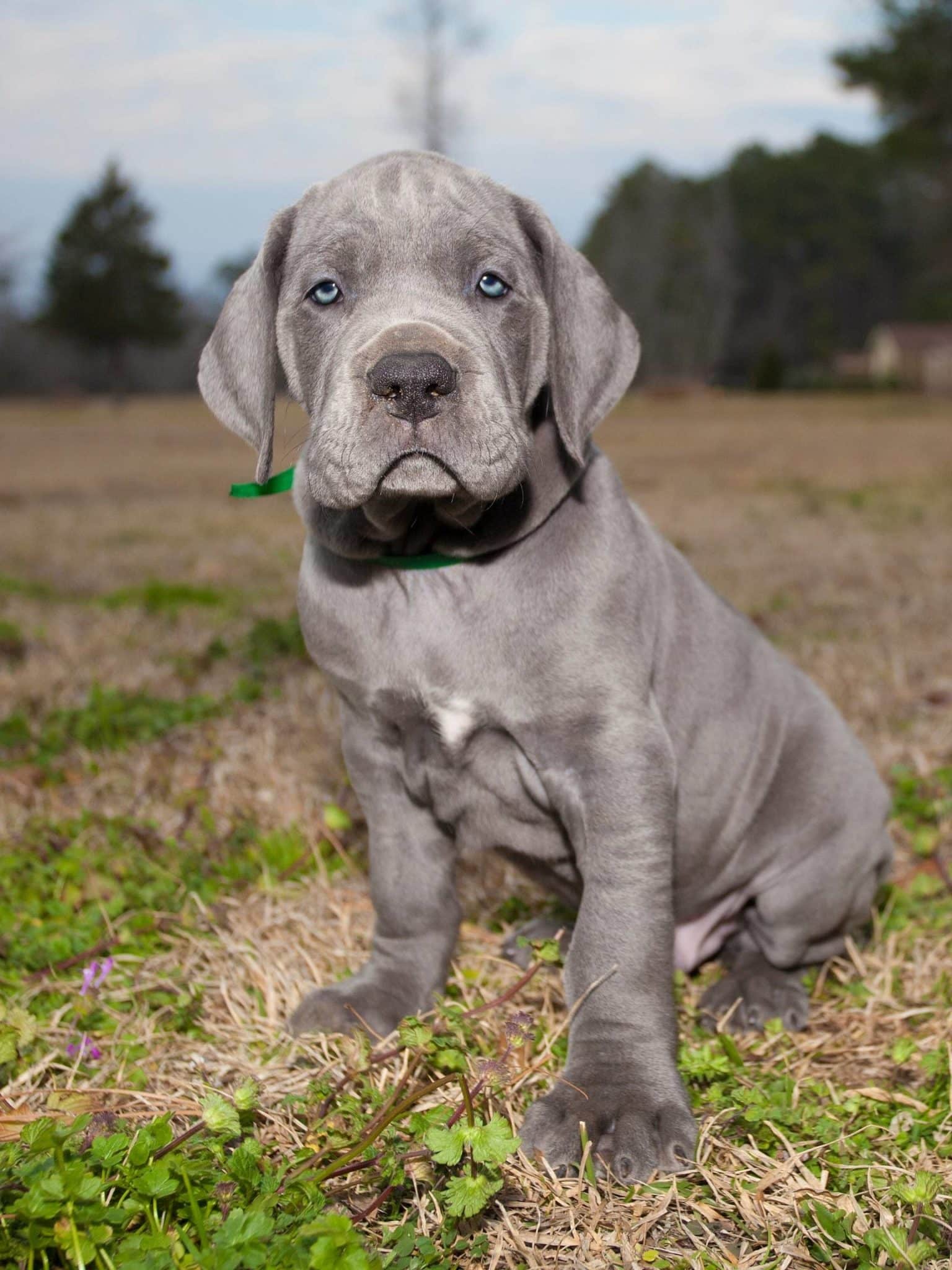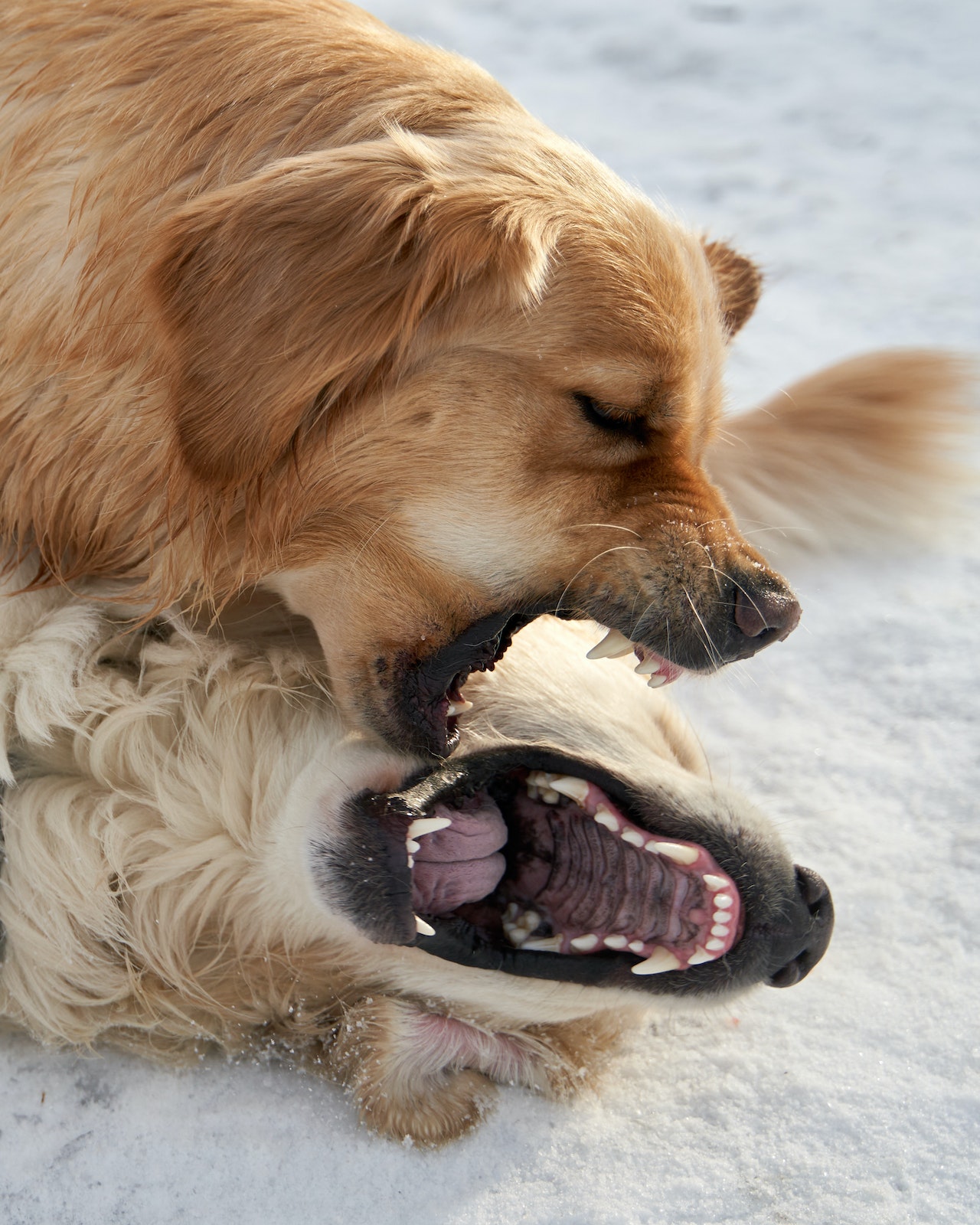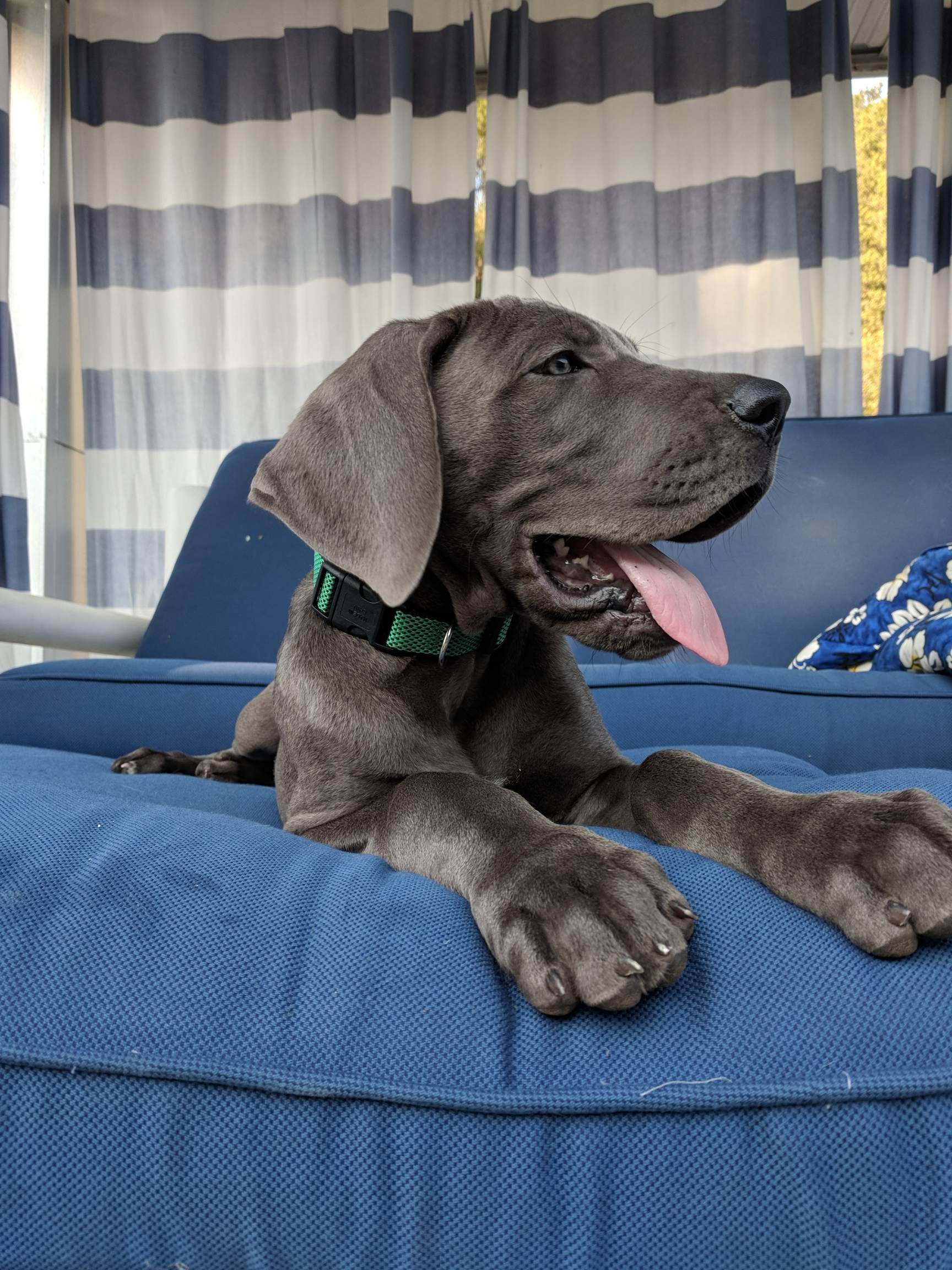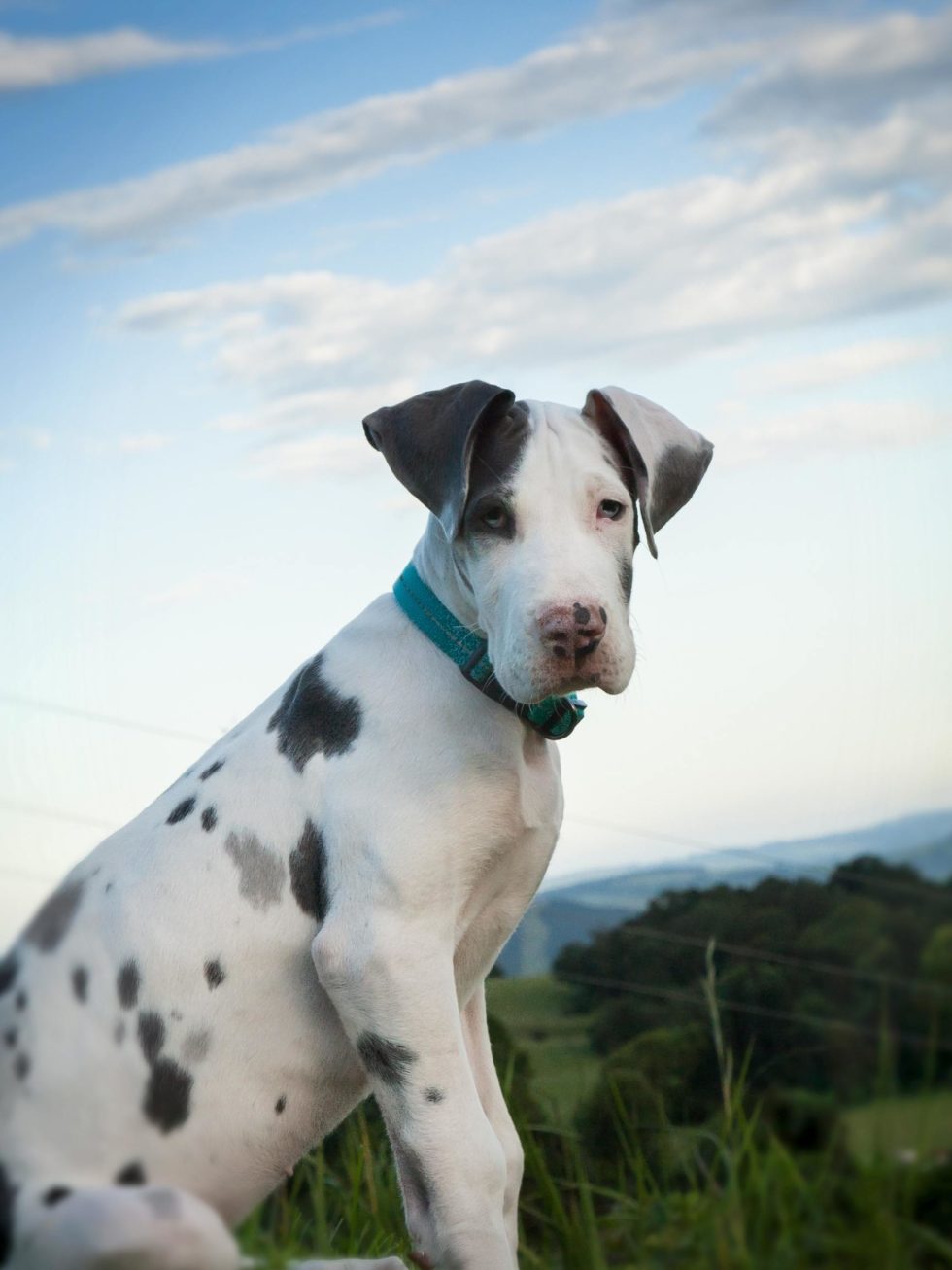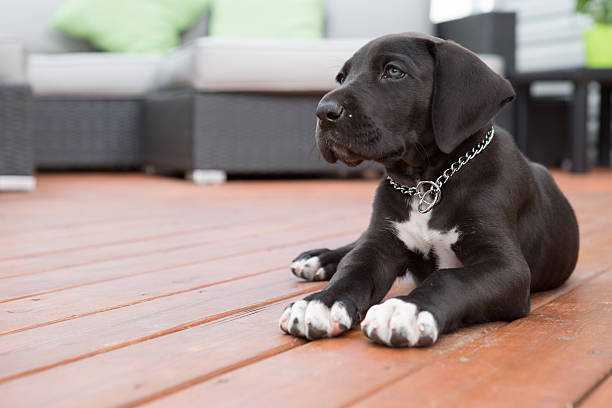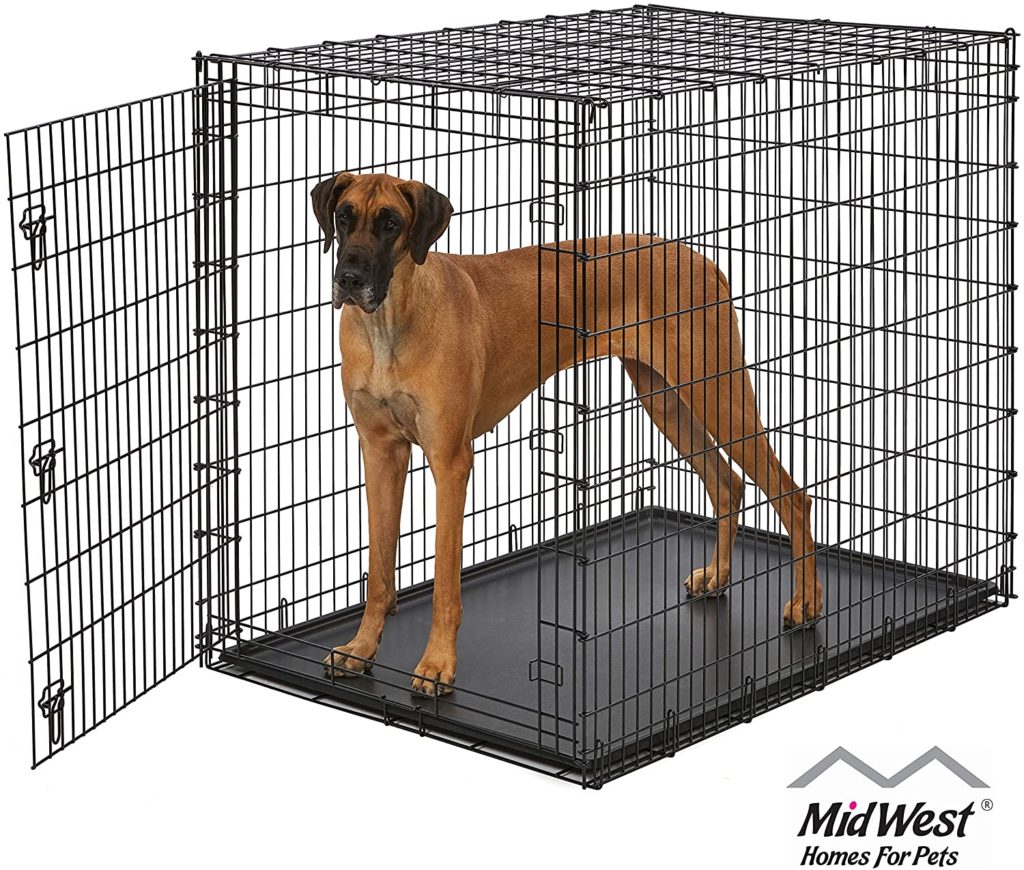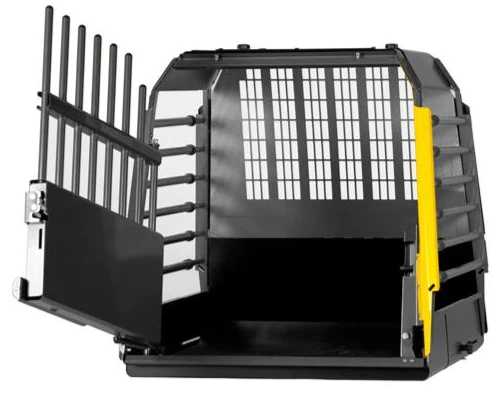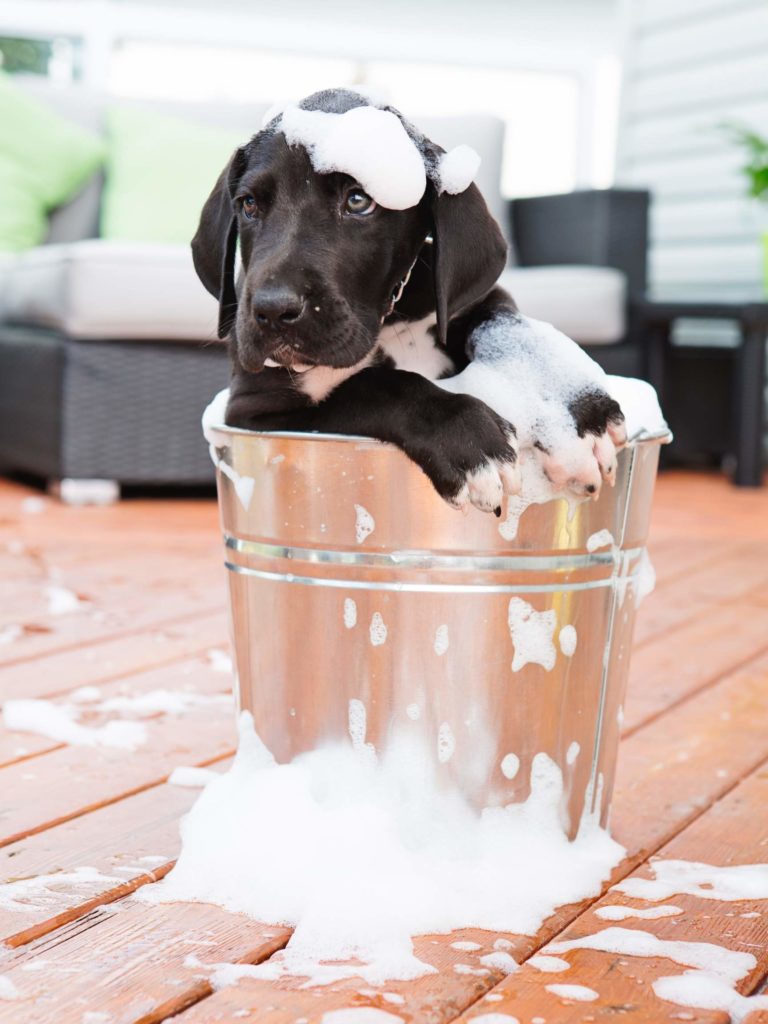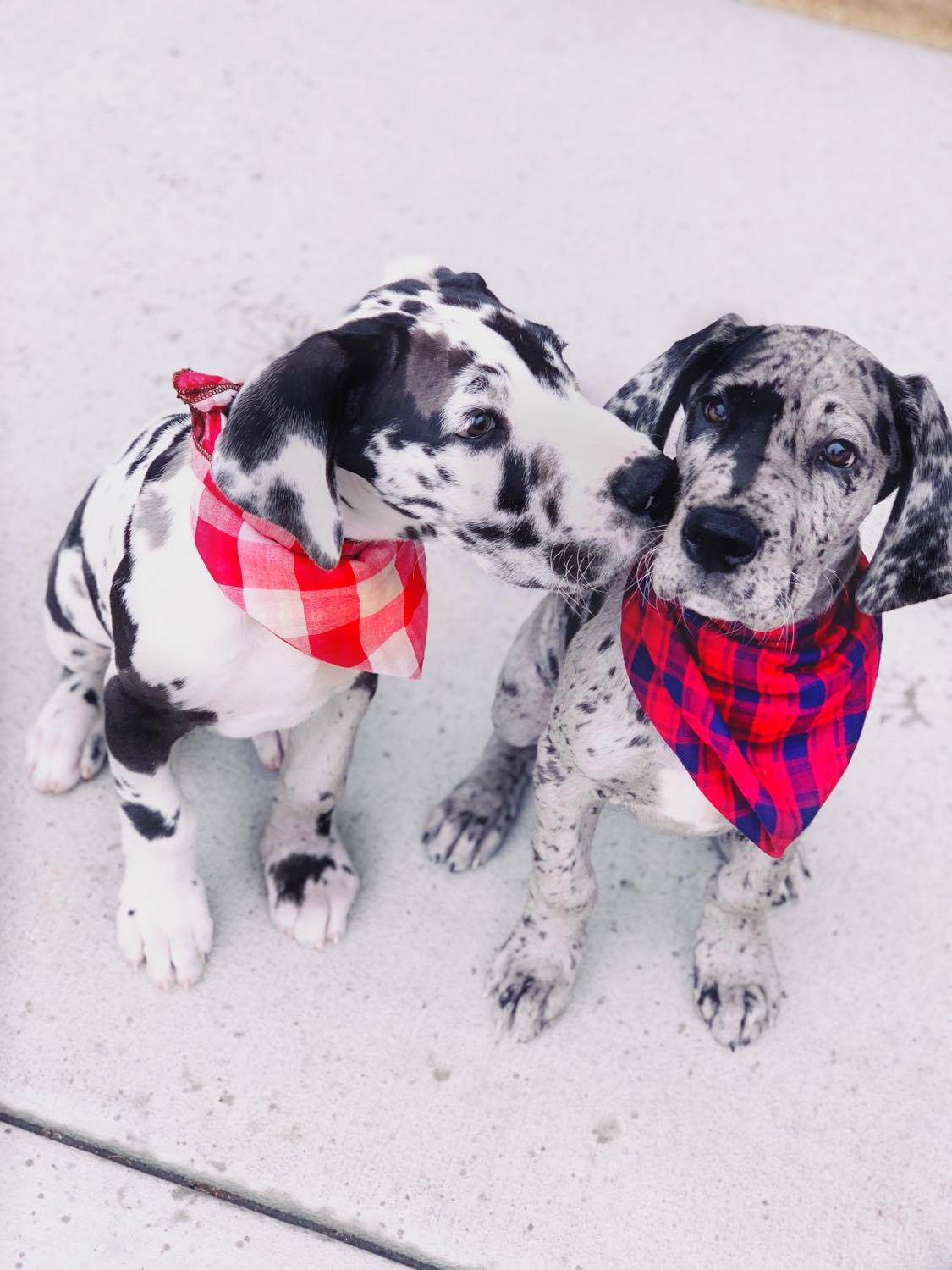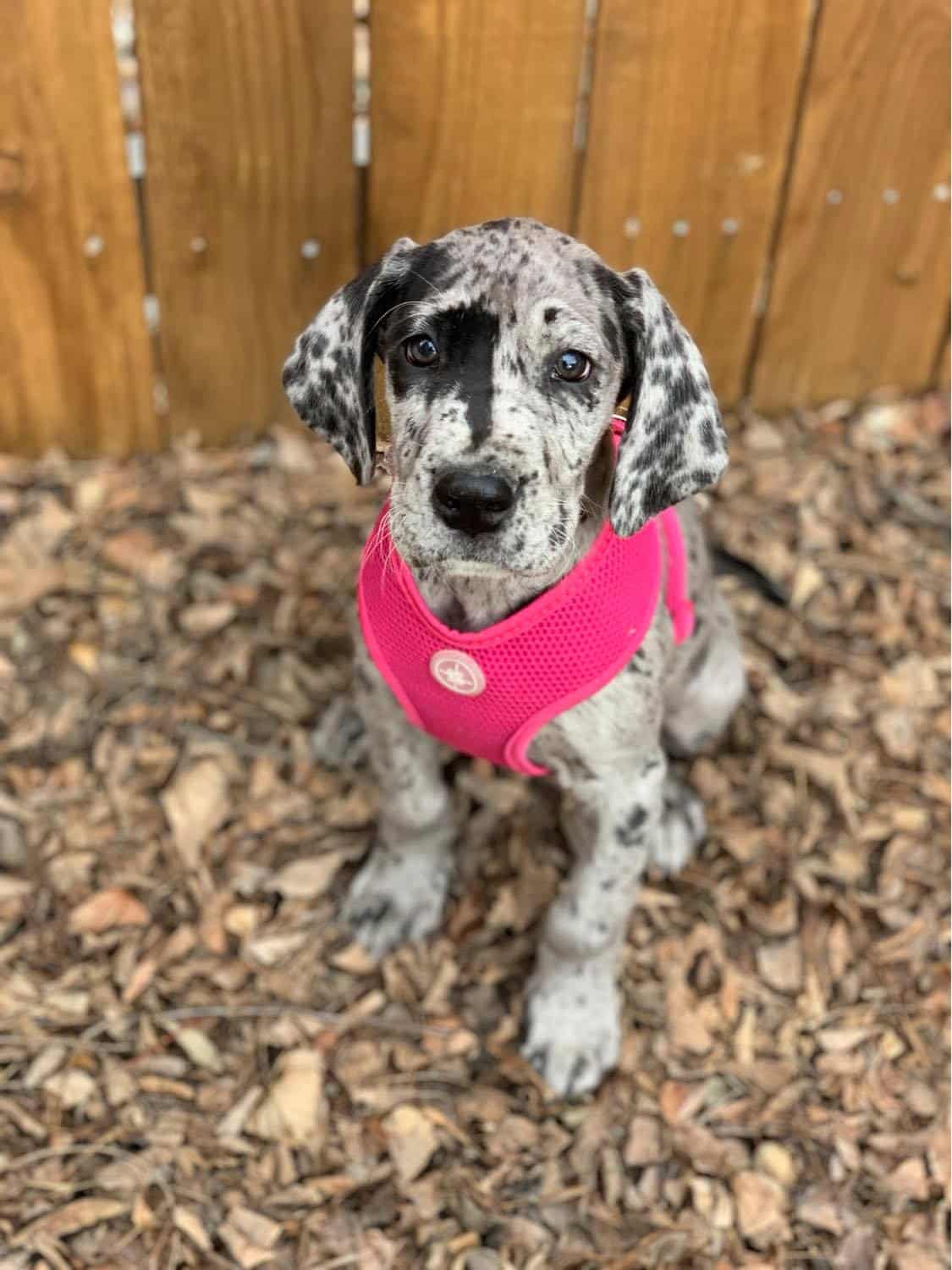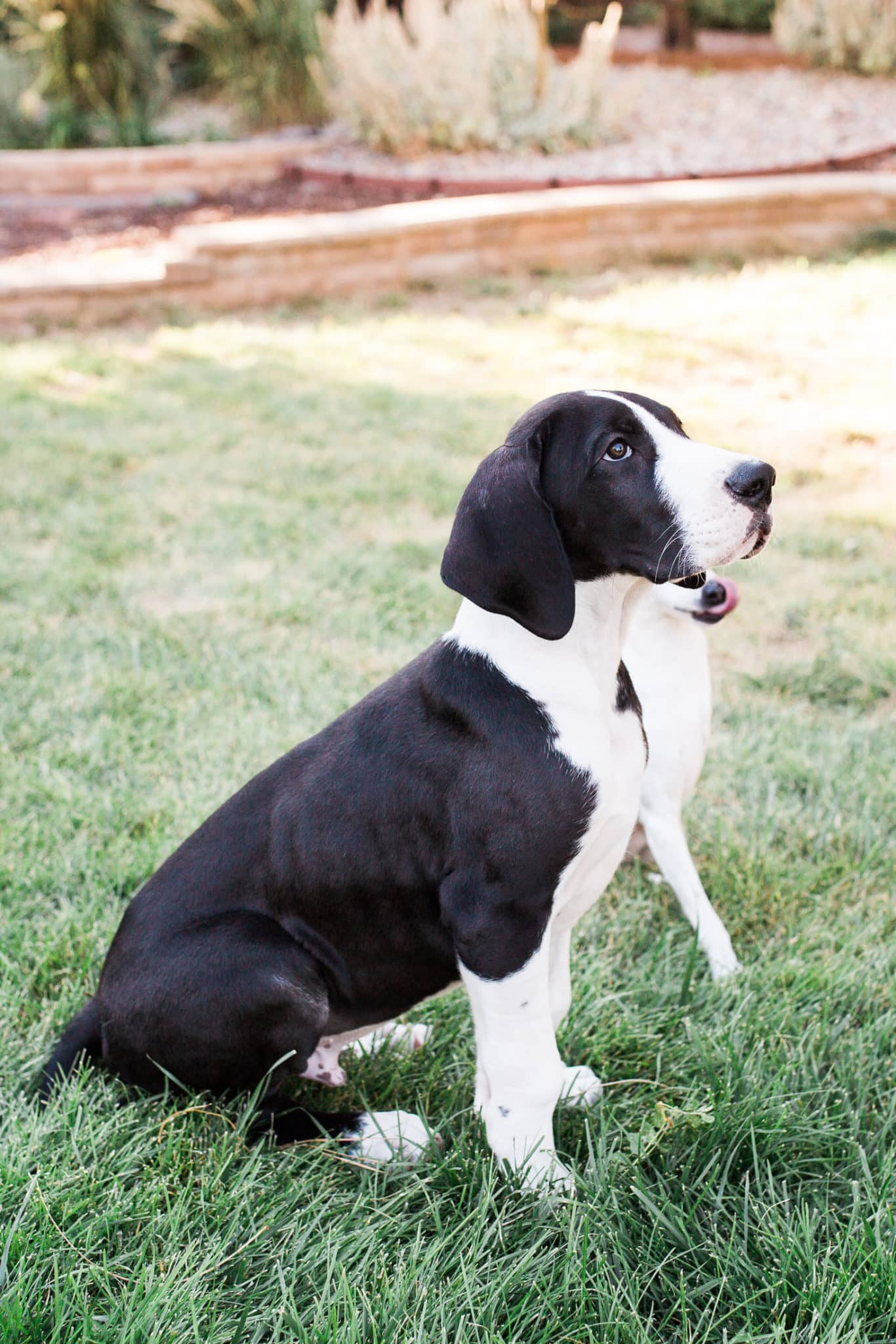Welcoming a Great Dane puppy into your life is an exciting and heartwarming experience!
These gentle giants are known for their immense size, affectionate nature, and unwavering loyalty. However, as with any new addition to your family, caring for a Great Dane puppy requires knowledge, patience, and dedication. In this comprehensive guide, “Great Dane Puppy Care 101,” we’ll walk you through everything you need to know to ensure your Great Dane puppy grows into a happy, healthy, and well-adjusted adult.
From nutrition and socialization to training tips and healthcare essentials, this article will equip you with the knowledge and tools to provide the best possible start in life for your furry companion. So, let’s embark on this incredible journey of puppy parenthood together and make sure your Great Dane puppy thrives every step of the way.
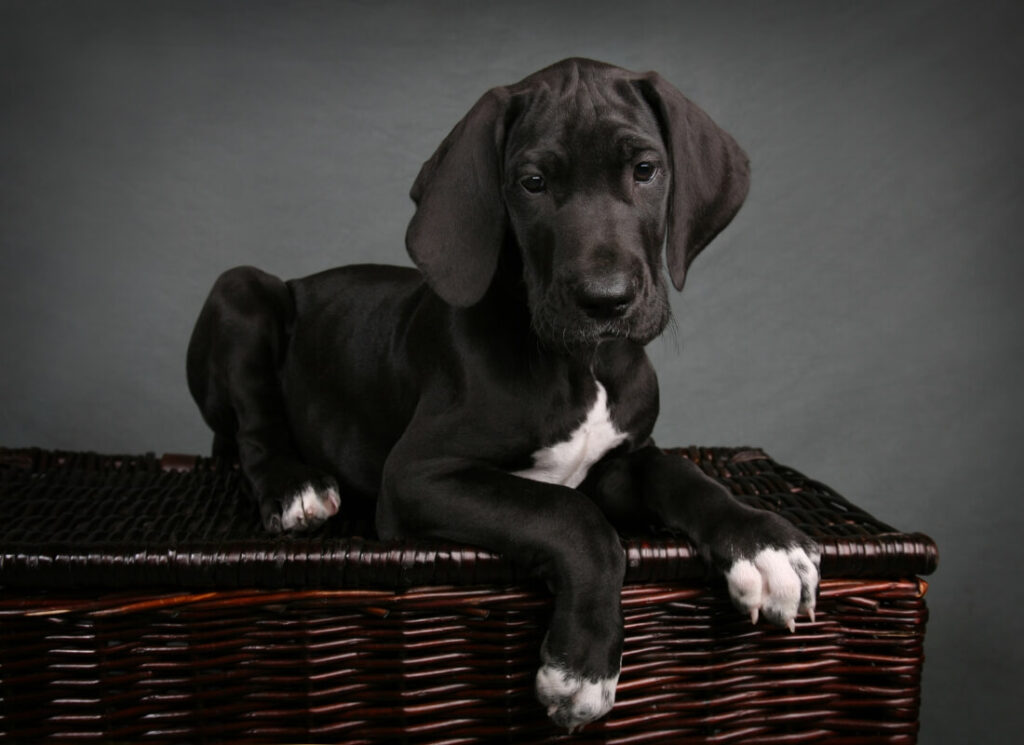
Great Dane Puppy Care 101
Taking care of a Great Dane puppy involves five key elements for their well-being and happiness.
- Nutrition
- Socialization
- Training
- Exercise
- Veterinary Care
Providing a balanced and high-quality diet tailored to their specific needs is crucial to support their rapid growth. Equally important is socialization, as early exposure to different people, animals, and environments helps them develop into well-adjusted and confident adults. Adequate exercise is another vital component, as Great Danes are active dogs that require daily physical activity to maintain their health and prevent boredom-related issues.
Training plays a pivotal role in shaping their behavior and obedience. Consistent and positive reinforcement-based training methods help ensure that your Great Dane puppy grows into a well-behaved and respectful companion. Lastly, regular veterinary care is imperative for their overall health. Routine check-ups, vaccinations, and preventive measures are essential to catch and address any health concerns early on, ensuring a long and happy life for your Great Dane puppy.
Let’s dig into each of these topics below!
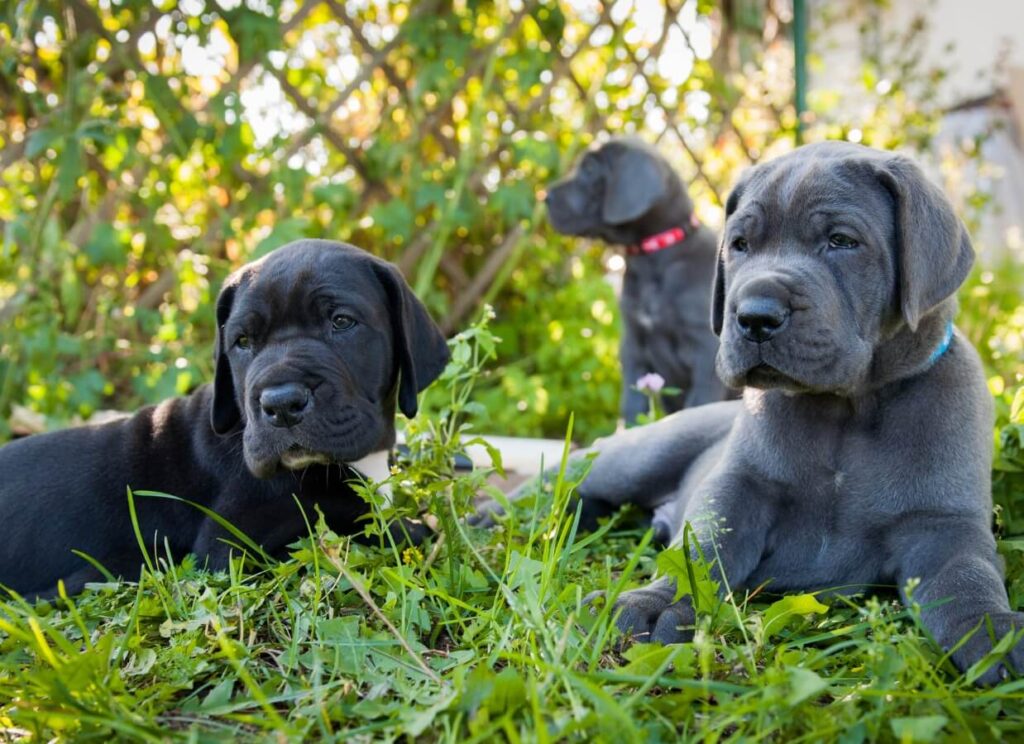
What to Feed a Great Dane Puppy
Choosing the right puppy food for your Great Dane is a crucial decision that can significantly impact their health and development.
When it comes to large or giant breed puppies like Great Danes, it’s important to focus on nutrition tailored to their specific needs. Look for puppy food formulas designed explicitly for large and giant breeds.
Yes, I said puppy food! You may have heard from other puppy owners or even your breeder that you should feed your new Great Dane puppy adult food. This is an outdated practice and no longer considered the gold standard of care!
A properly formulated large or giant breed puppy food will typically have controlled levels of calcium and phosphorus to support slow and steady bone growth, reducing the risk of skeletal issues that can be common in rapidly growing puppies.
Additionally, ensure the food contains high-quality protein sources to aid in muscle development. Consult with your veterinarian to select a brand and formula that meets your Great Dane puppy’s unique dietary requirements.
Our opinion mirrors that of board-certified veterinary nutritionists, who say that the following formulas are ideal for all Dane puppies under the age of two:
- Purina Pro Plan Large Breed Puppy – any flavor!
- Purina Pro Plan Sensitive Skin & Stomach Large Breed puppy – TOP PICK, salmon-based
- Eukanuba Large Breed Puppy (Great for active and sporting dogs)
- Purina One Large Breed Puppy (Excellent budget option)
- Hill’s Science Diet Puppy Large Breed
- Royal Canin Giant Puppy Dry Dog food (to age 12 months) – TOP PICK, PREMIUM OPTION
- Royal Canin Giant Junior Dry Dog food (8-24 months)
- Purina Large Breed Puppy Chow
Check out THE GIANT DOG FOOD PROJECT to compare brands and values.
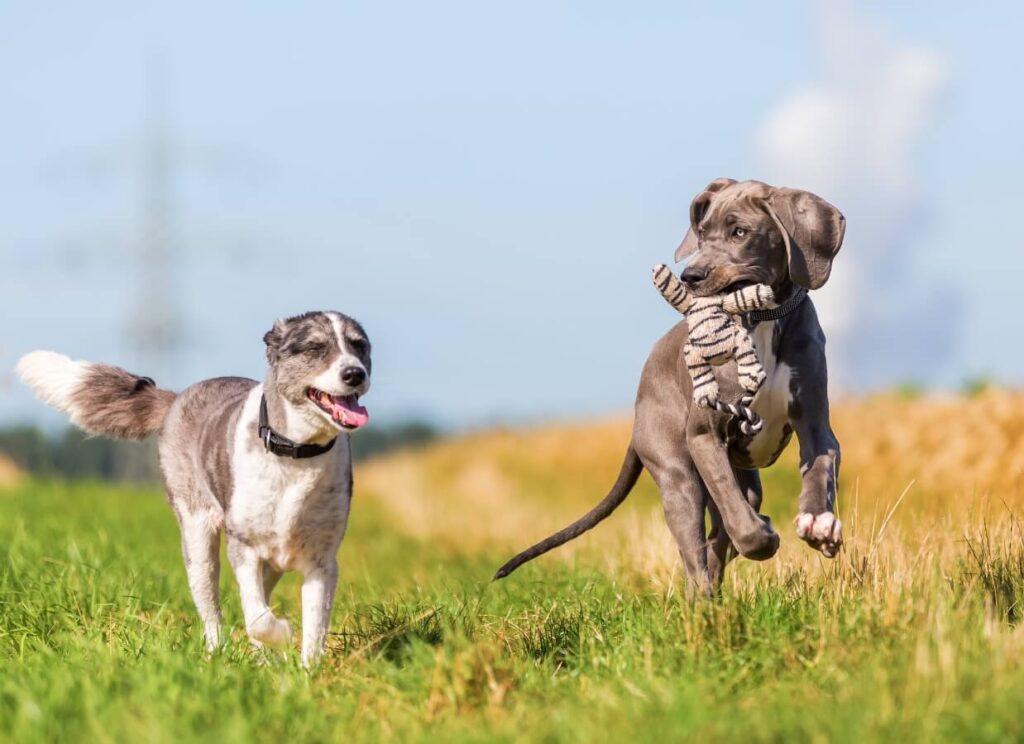
How to Train a Great Dane Puppy
Training a Great Dane puppy is a rewarding journey that requires patience, consistency, and positive reinforcement. It’s also really, really important! The last thing you want is a giant breed dog taking YOU for a walk.
Begin with basic obedience commands like “sit,” “stay,” and “come” in a controlled, distraction-free environment. Use treats and praise as rewards to reinforce desired behaviors. Practice these behaviors several times a day, especially at first, in a variety of locations. Puppies thrive on repetition!
For leash training, start with short walks to get your puppy used to the leash and gradually increase the distance. Encourage loose leash walking by stopping and changing direction when they pull, rewarding them when they walk calmly by your side.
Off-leash training can be challenging for large breeds like Great Danes, but it’s essential for their safety and well-being. Start in a secure, fenced area (or use a long leash, like this one) and practice recall commands like “come.”
Gradually increase the distance and practice in different environments with varying levels of distractions. Never scold your puppy for failing to come to you, and always make coming to you a positive experience.
Remember that Great Dane Puppies BITE! This is a normal, playful behavior that usually results from excitement. When your puppy gets too amped up, cross your arms, SIGH, and walk away. This teaches your puppy that you will disengage if they become rude with their teeth; they will learn (with repetition), to chill out.
To take your training to the next level and ensure your Great Dane is a well-behaved canine citizen, consider pursuing the Canine Good Citizen (CGC) title. This program evaluates a dog’s obedience and temperament, including behaviors like sitting politely for petting and walking calmly on a leash. Earning a CGC title not only showcases your Great Dane’s training and good manners but also demonstrates your commitment to responsible dog ownership. Remember that consistency, positive reinforcement, and patience are the keys to successfully training your Great Dane puppy.
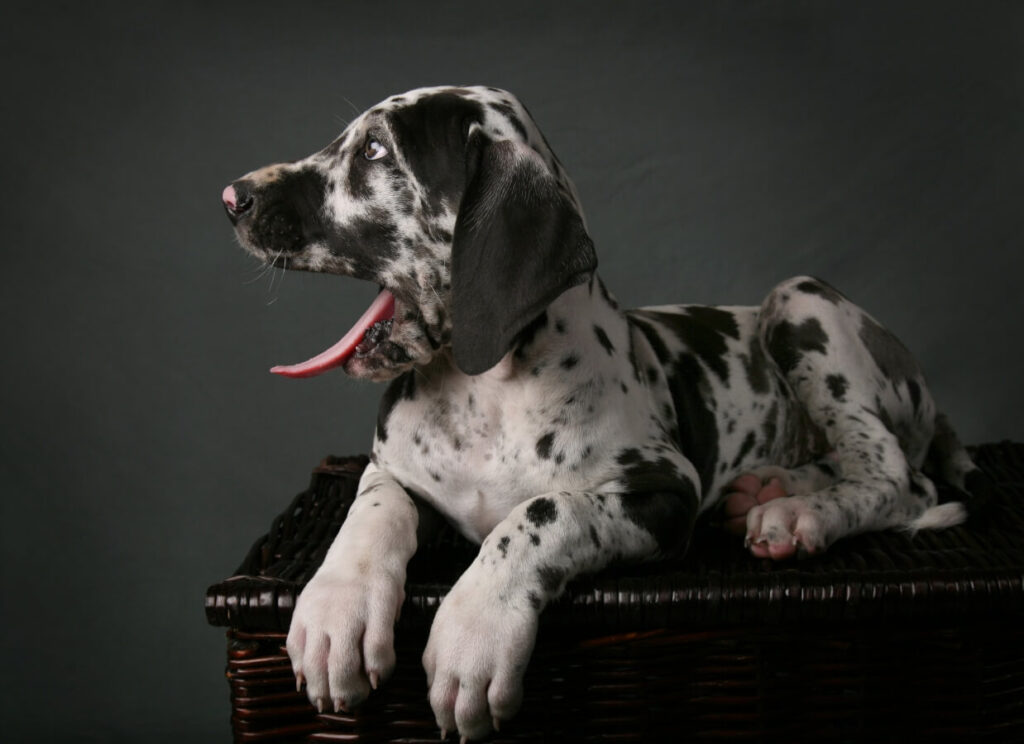
How Much Exercise Should a Great Dane Puppy Get?
Exercising a Great Dane puppy requires a delicate balance due to their rapid growth and susceptibility to bone and joint issues.
While they are a large breed known for their energy, it’s crucial to avoid excessive forced exercise during their puppyhood. Examples of something to avoid include long leashed walks on hard pavement, or super long hikes that result in pure exhaustion.
Generally, Great Dane puppies should have short, controlled play sessions and moderate walks. Most of their movement should actually come from free play on soft, varied terrain!
A rule of thumb is 5 minutes of exercise per month of age, up to a maximum of 20-30 minutes for young puppies (for leashed walks and hikes). Focus instead on low-impact activities to protect their developing joints, like interactive play and exploration of various textures (which doubles as socialization).
Swimming is an excellent option as it provides exercise without putting stress on their limbs. Consulting with a veterinarian or canine specialist can help you tailor an appropriate exercise regimen for your Great Dane puppy based on their individual needs and growth rate. Remember, the goal is to ensure their physical development is gradual and healthy.
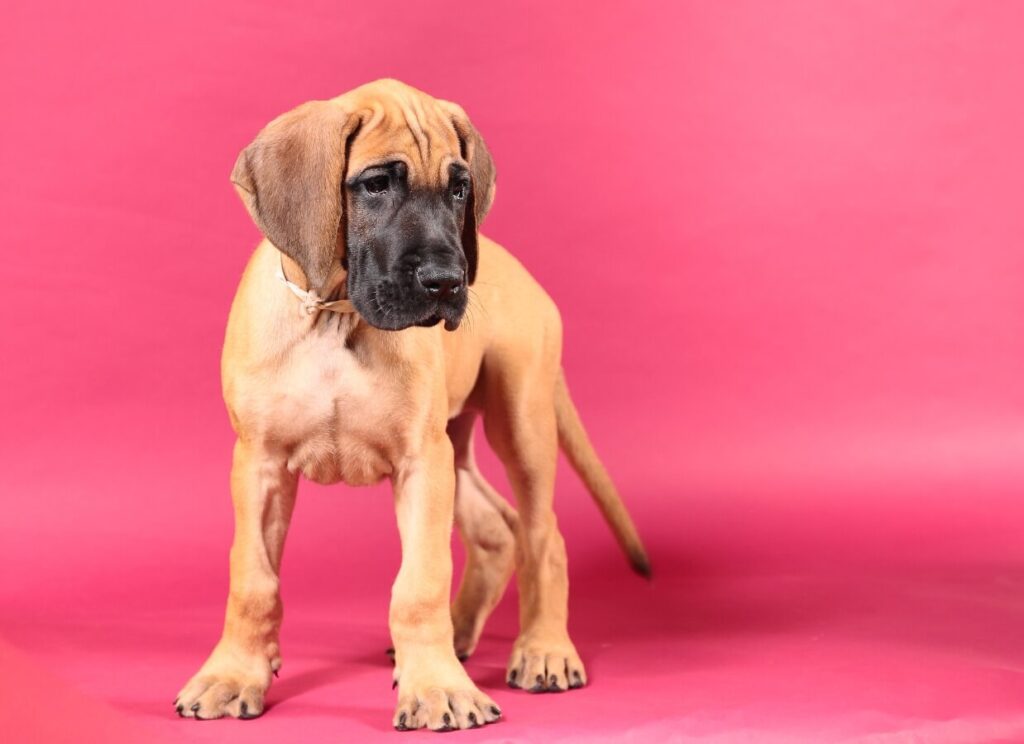
Veterinary Care for Great Dane Puppies
Veterinary care for Great Dane puppies is a critical component of their overall well-being. We believe in and trust science and veterinarians!
These large breed puppies are more susceptible to certain health issues, making regular check-ups and vaccinations crucial. Start with a comprehensive wellness exam shortly after bringing your Great Dane puppy home, and follow a recommended vaccination schedule to protect them from diseases like parvovirus and distemper.
Given their size, it’s important to monitor their growth and development, ensuring they’re growing at an appropriate rate to avoid skeletal issues. Great Dane puppies should be grown slowly!
Regular check-ups also allow the vet to address any concerns early on. Discuss a proper nutrition plan with your veterinarian to support your puppy’s unique dietary needs during their rapid growth phase. Additionally, consider discussing preventive measures such as flea and tick control and heartworm prevention.
Veterinary care is not only about treating illness but also about proactive health management to ensure a long, healthy, and happy life for your Great Dane puppy.
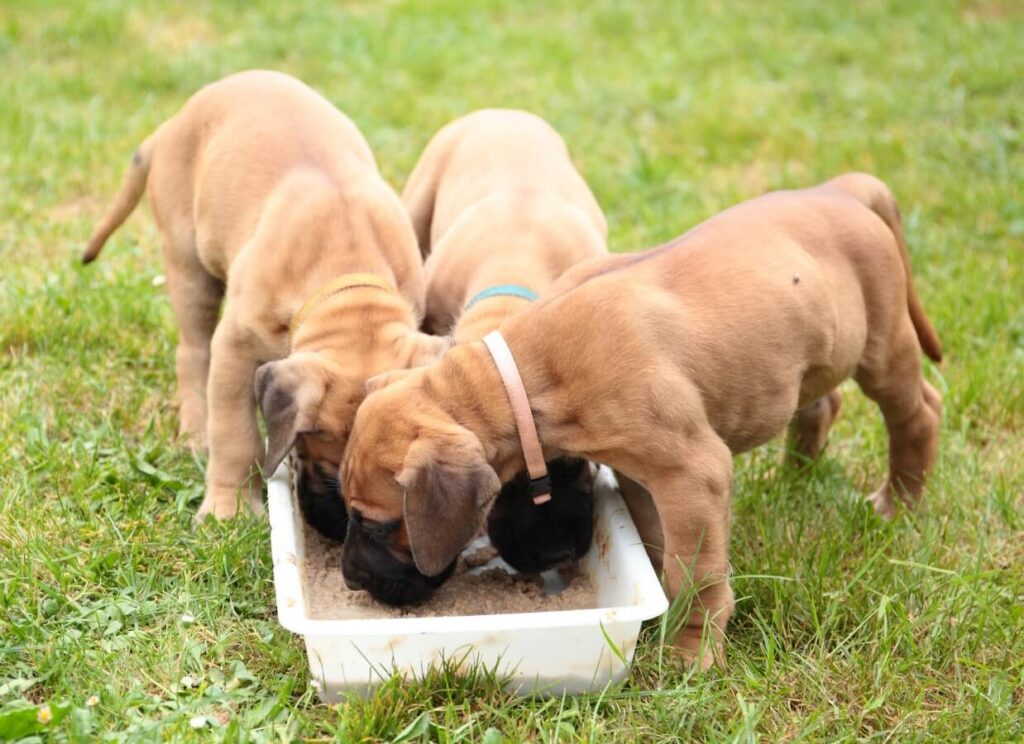
Great Dane Puppies are Easy to Care For
Caring for Great Dane puppies is both a rewarding and responsible undertaking.
These gentle giants require specialized attention to ensure their health, happiness, and well-being. From choosing the right nutrition and providing early socialization to maintaining a balanced exercise routine, proper training, and regular veterinary care, each aspect of their care is essential in fostering a thriving companion.
Great Dane puppies may be large, but they’re also known for their boundless love and loyalty, making the effort to raise them well truly worthwhile. By dedicating time and effort to their upbringing, you not only nurture a strong bond but also help them grow into the well-behaved and content adults that this remarkable breed is known to be. Enjoy your puppy and have fun!


